Judi Willis saw this Northern Hawk-Owl at the Glenmore Reservoir yesterday (Tuesday November 15, 2016), just before the snowstorm.
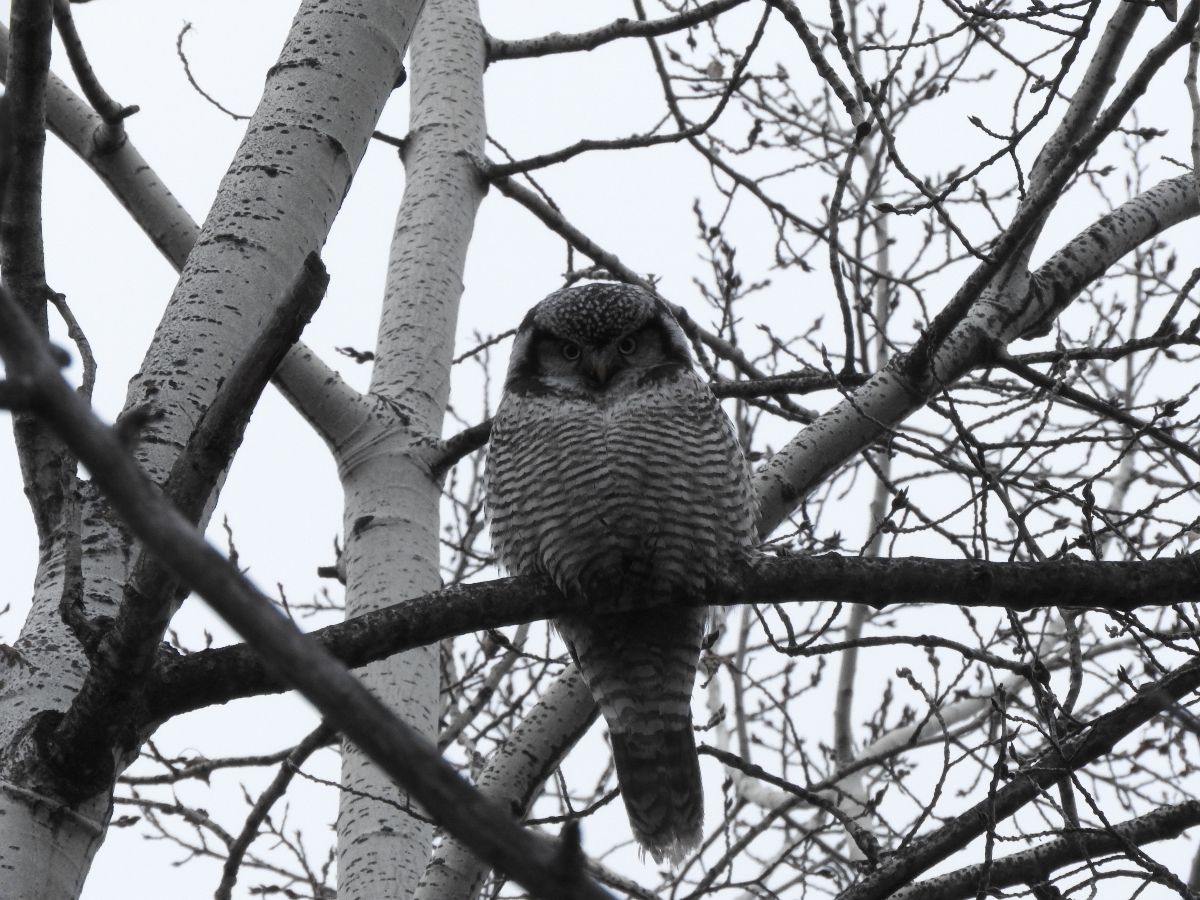
Judi Willis saw this Northern Hawk-Owl at the Glenmore Reservoir yesterday (Tuesday November 15, 2016), just before the snowstorm.

The Birds & Beers meeting that was scheduled for Friday November 18 has been changed to Friday December 9. This one promises to be a special event so please join us!
Royal Canadian Legion, Centennial Calgary Branch #285
9202 Horton Road SW
Friday December 9, 6:00-9:00 pm
This is one block west of Macleod Trail, between Heritage Drive and Southland Drive. See the Event’s Facebook page for a map and more information.
We meet in the back room at the Legion, so once you get here proceed to the back, past the food counter. It’s fine to come late if you can’t make it at 6 pm; these are very informal get-togethers. Bring your friends!
Nature Calgary Speaker Series, Tuesday November 15, 7:30 pm.
Cardel Theatre, 180 Quarry Park Blvd. SE
Chris Fisher will speak on “The Wildlife of Great Explorers.” Learn about the travels of the great explorers of Alberta and some of the birds, plants, and mammals named for them.
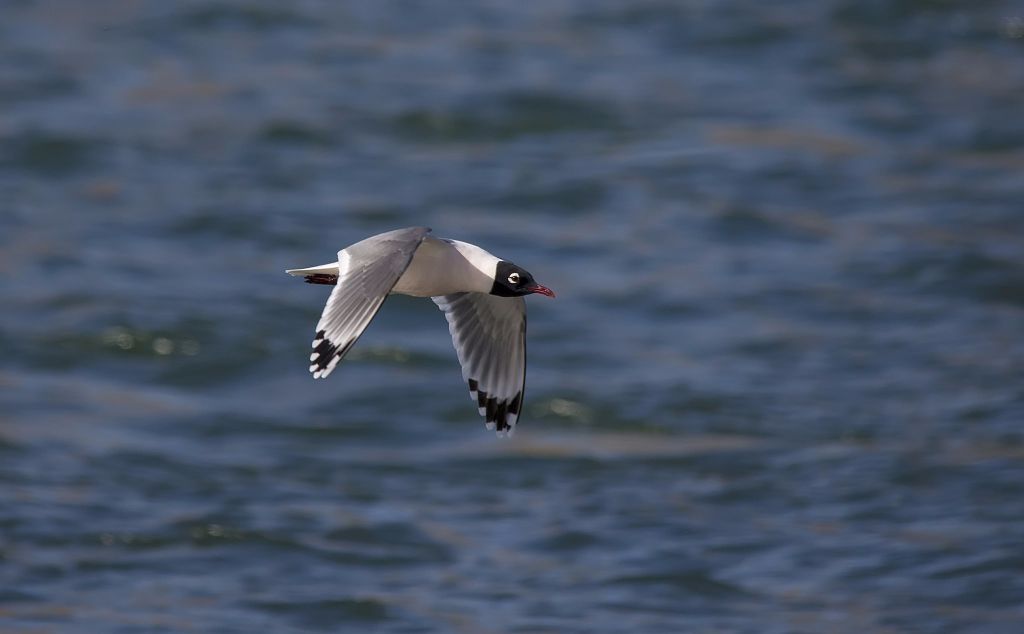
Franklin’s Gull, named for Sir John Franklin. Photo by Dan Arndt, Carburn Park, April 2015.
See the complete description of the talk, and directions to the location, on the Nature Calgary website.
Free parking. Please bring a donation for the Food Bank.
Tony LePrieur got this close-up photograph of a Ruffed Grouse west of Calgary, and this Pileated Woodpecker in the city, both on the weekend of October 30, 2016.

Ruffed Grouse.

Pileated Woodpecker (male).
Leanne Ross photographed these birds this fall in her yard in Okotoks, just south of Calgary. She reports that the Tree Sparrow only stayed for a day, whereas the White-throated and White-crowned Sparrows were around for a week or so, usually accompanied by Dark-eyed Juncos.
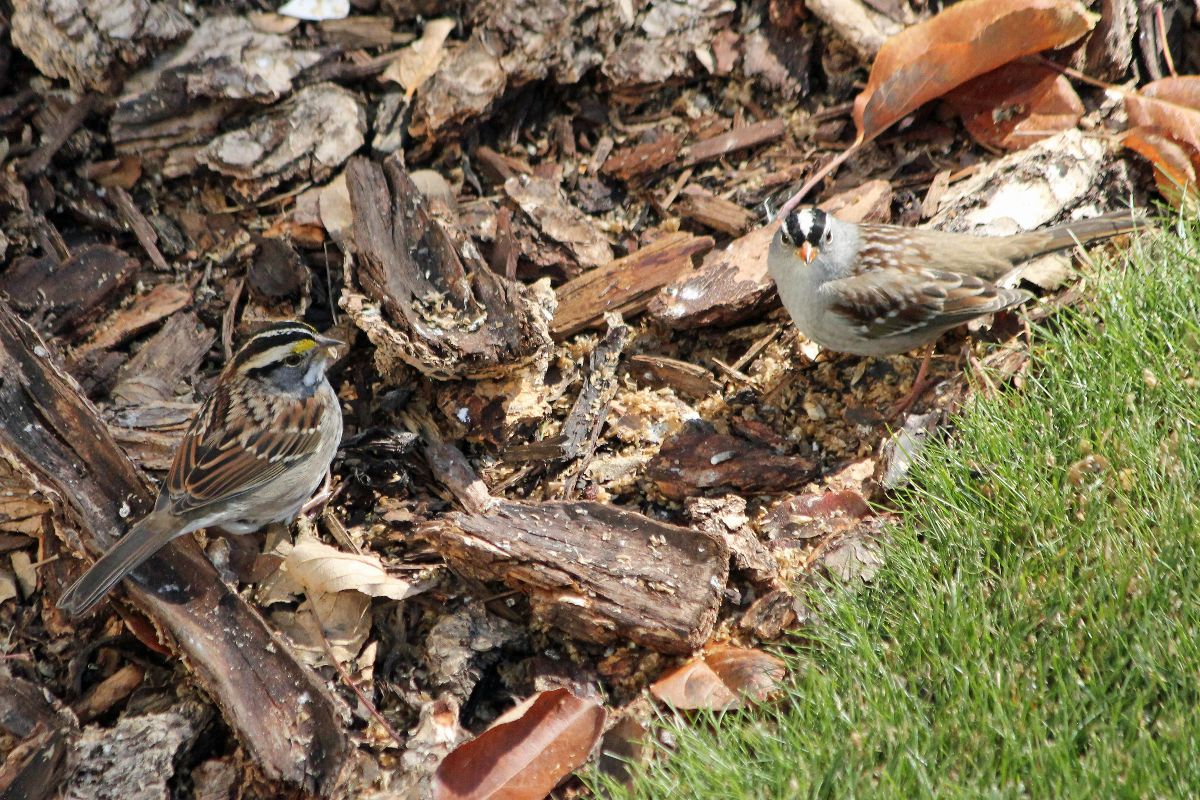
White-throated Sparrow (left) and White-crowned Sparrow (right).
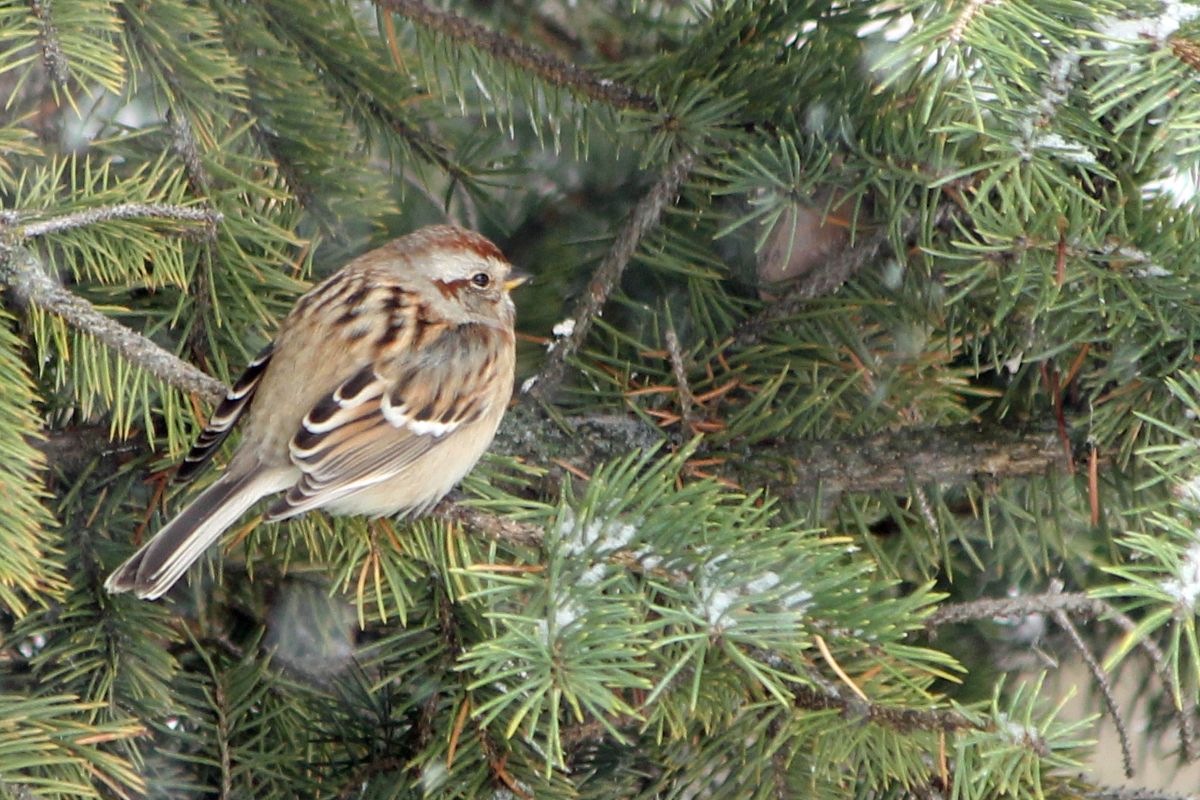
American Tree Sparrow.
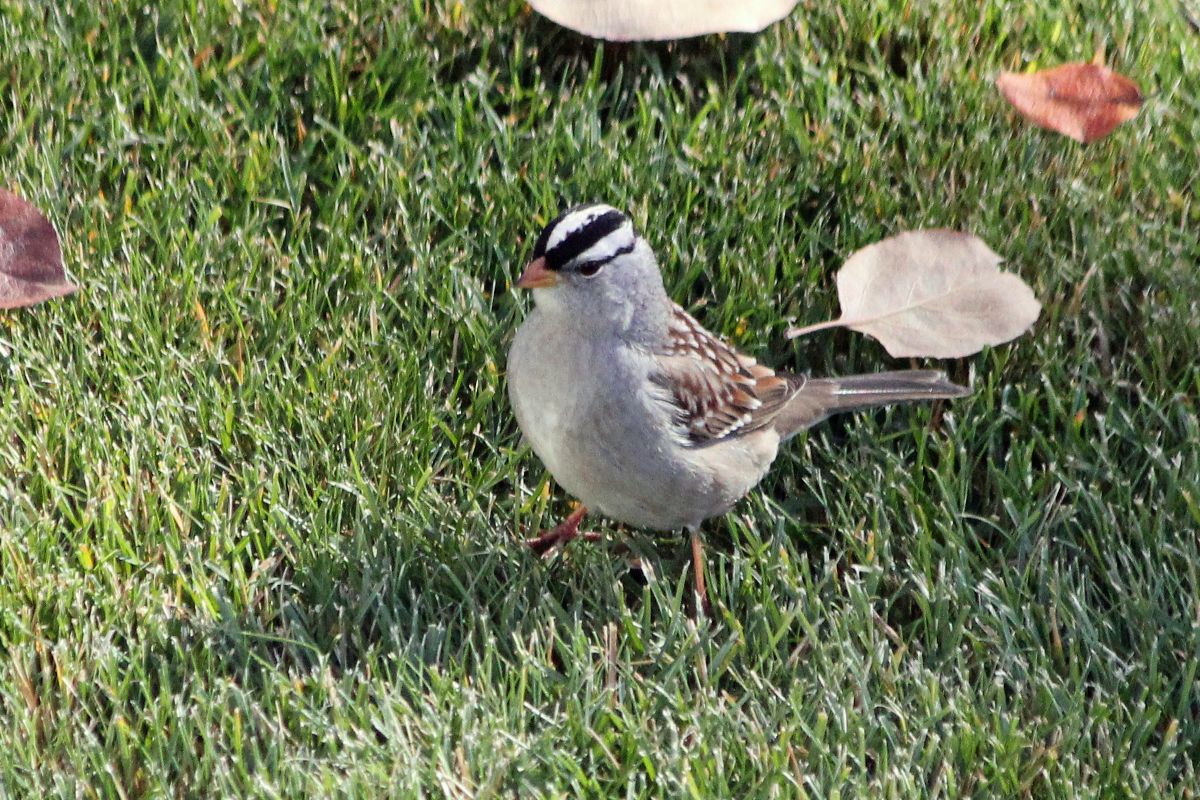
White-crowned Sparrow.
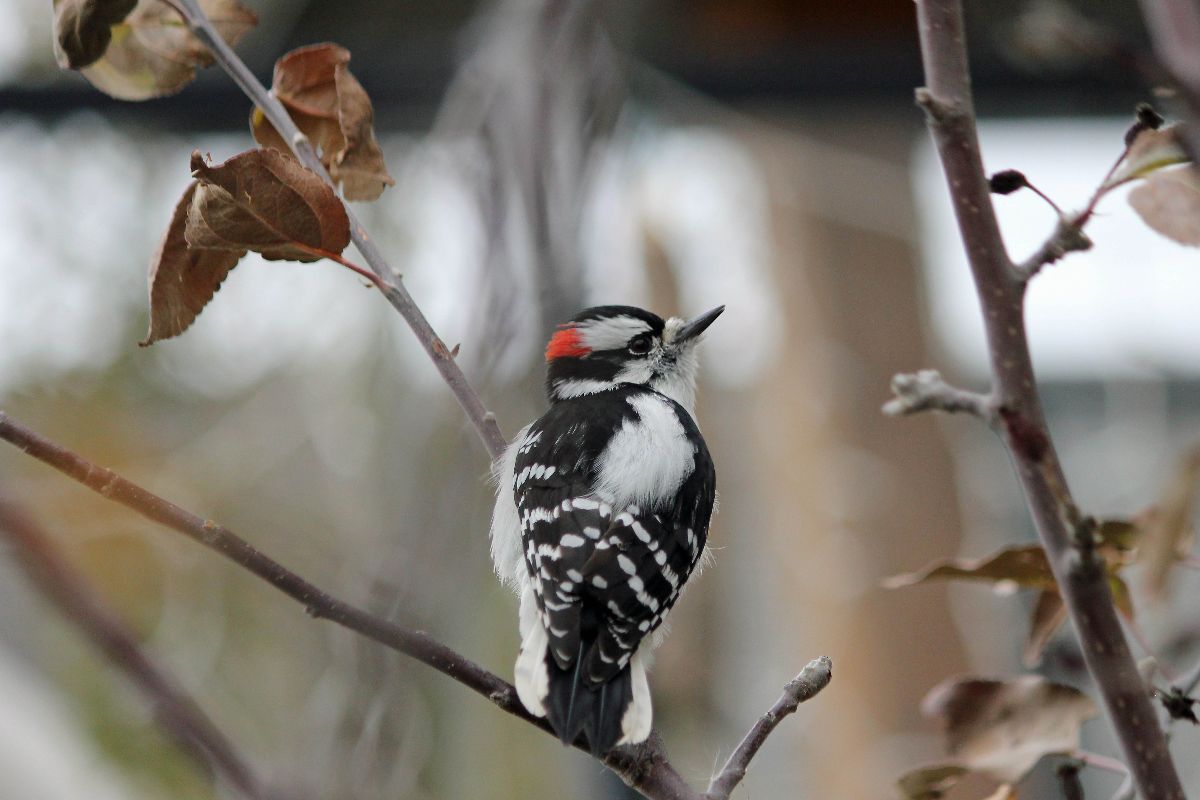
Downy Woodpecker (male), a year-round resident.
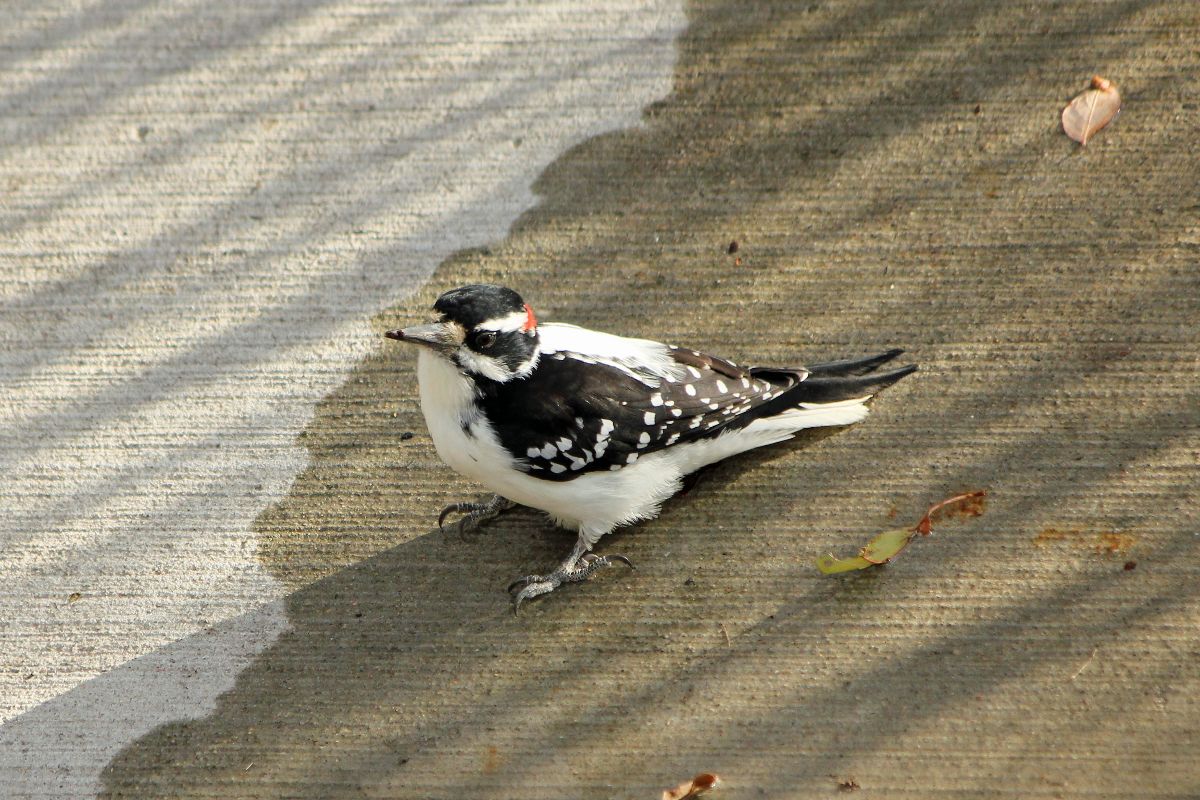
Hairy Woodpecker (male), also a resident bird.
If you have good photographs of birds from the Calgary area, email them to us and we may post them.
Posted by Dan Arndt
Before the 2013 flood, the Glenmore Reservoir was always a great place to see hundreds of migrating autumn waterfowl and waders. In 2013 and 2014 though, the birds did not return in large numbers. One of the primary contributing factors to this was that with the sheer volume of water pulsing through the reservoir in late June of 2013, the bottom of the reservoir would have been either completely scoured of vegetation, or covered with silty and sandy sediment, killing the vegetation and invertebrate life that would otherwise thrive there. By the fall of 2015 though, the birds began to return in fairly decent numbers, and this fall was once again extremely productive. In the wake of any natural disaster, eventually things return to some level of stability and normalcy, and it was great to be back birding in South Glenmore Park and along the edges of the reservoir.
As per usual, we headed over to the ridge overlooking the reservoir to see what we could find out there. While we did see a few hundred American Coots at the far west edge of the reservoir, and a few Eared, Horned, and Western Grebes in close, there wasn’t anything close enough to really get good looks at without a scope. Thankfully we heard the tell-tale chipping of some American Tree Sparrows and Dark-eyed Juncos feeding below the spruce trees nearby.
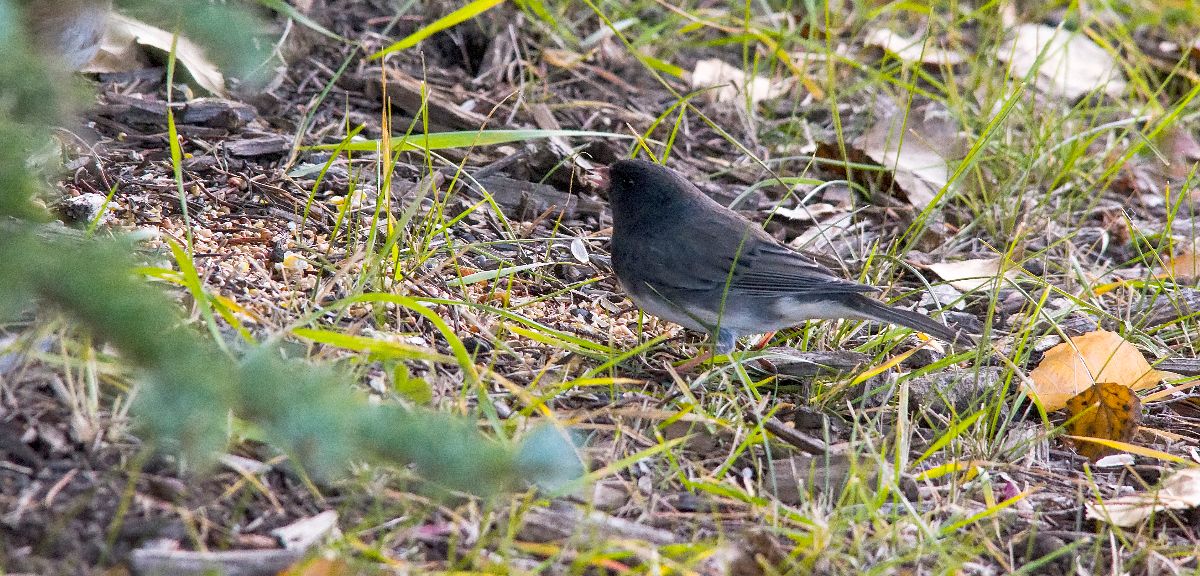
Dark-eyed Junco
[exif id=”16218″]
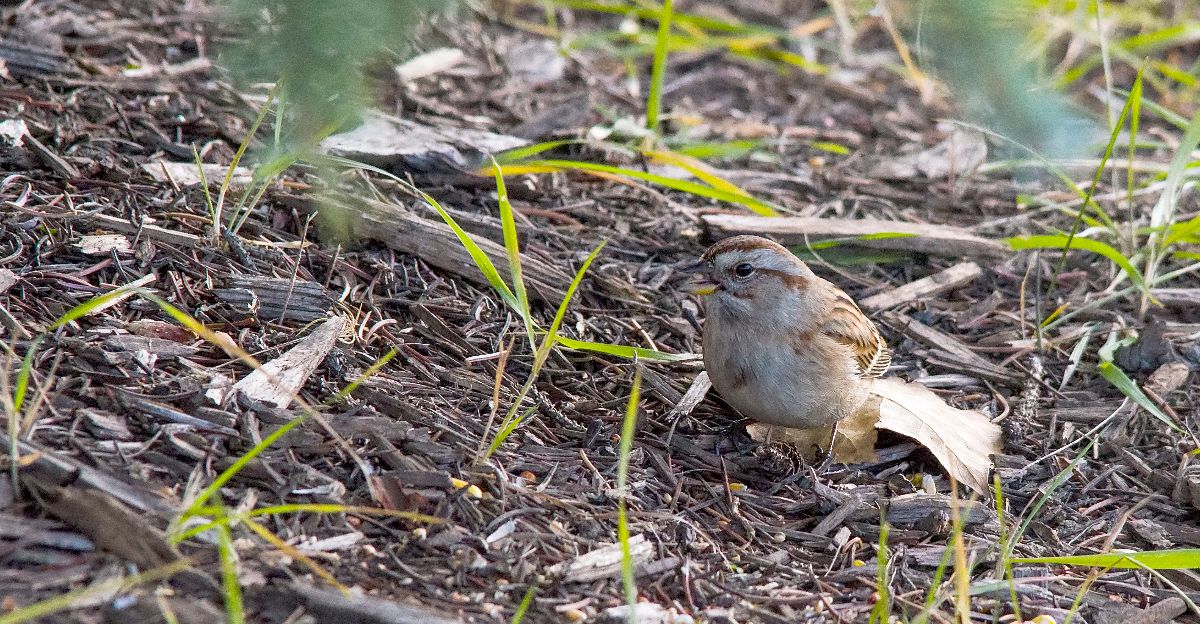
American Tree Sparrow
[exif id=”16219″]
We had a pretty good-sized turnout that morning, and so we split up, with my group taking the top pathway up away from the reservoir first. Given the slight chill in the air, we were all thankful to be off the water’s edge until it warmed up later in the day!
Roosting near its usual nesting spot, and after having a decent discussion about the ways to best distinguish between a Common Raven and American Crow, we found this fellow sitting atop a favored perch. It gave a few calls of different types as we watched it, and then finally flew off to join another Common Raven as it flew into the nearby neighborhood.
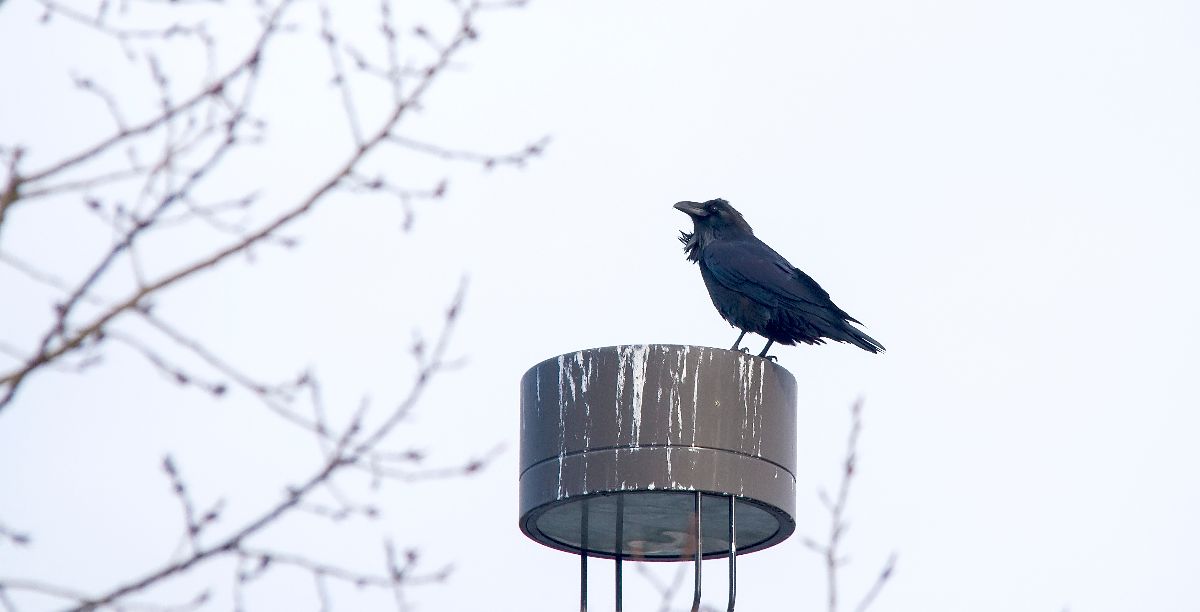
Common Raven
[exif id=”16227″]
As we explored the park, we heard the wheezy, raspy call of a Boreal Chickadee, which seemed quite out of place this far from the Weaselhead and the dense spruce cover of the slopes of the reservoir. Upon our investigation though, we found it stashing plenty of seeds in a small cavity near one of the homes with bird feeders set out.
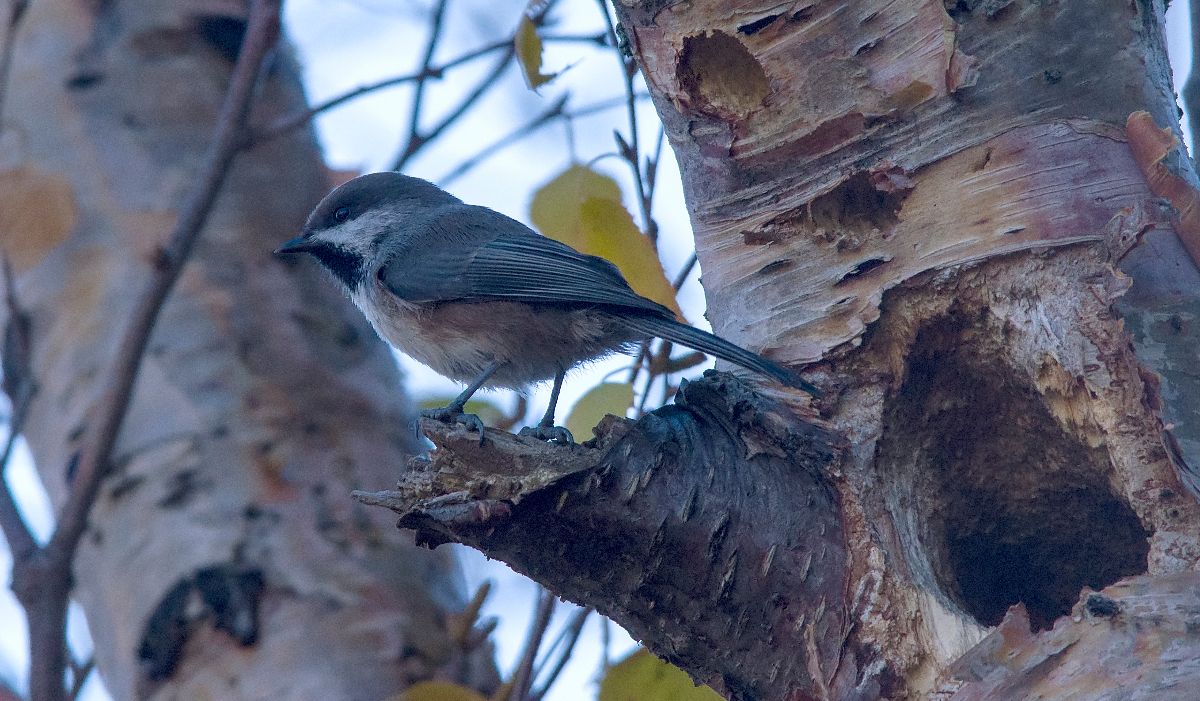
Boreal Chickadee
[exif id=”16220″]
We also stumbled across a pair of young Mule Deer bucks, foraging in the low willows that were numerous throughout the upper slope of the park. Both looked to be only a year or two old, with only brow antler tines. They didn’t seem particularly disturbed by us walking nearby, which allowed us to notice one particular… anomaly.
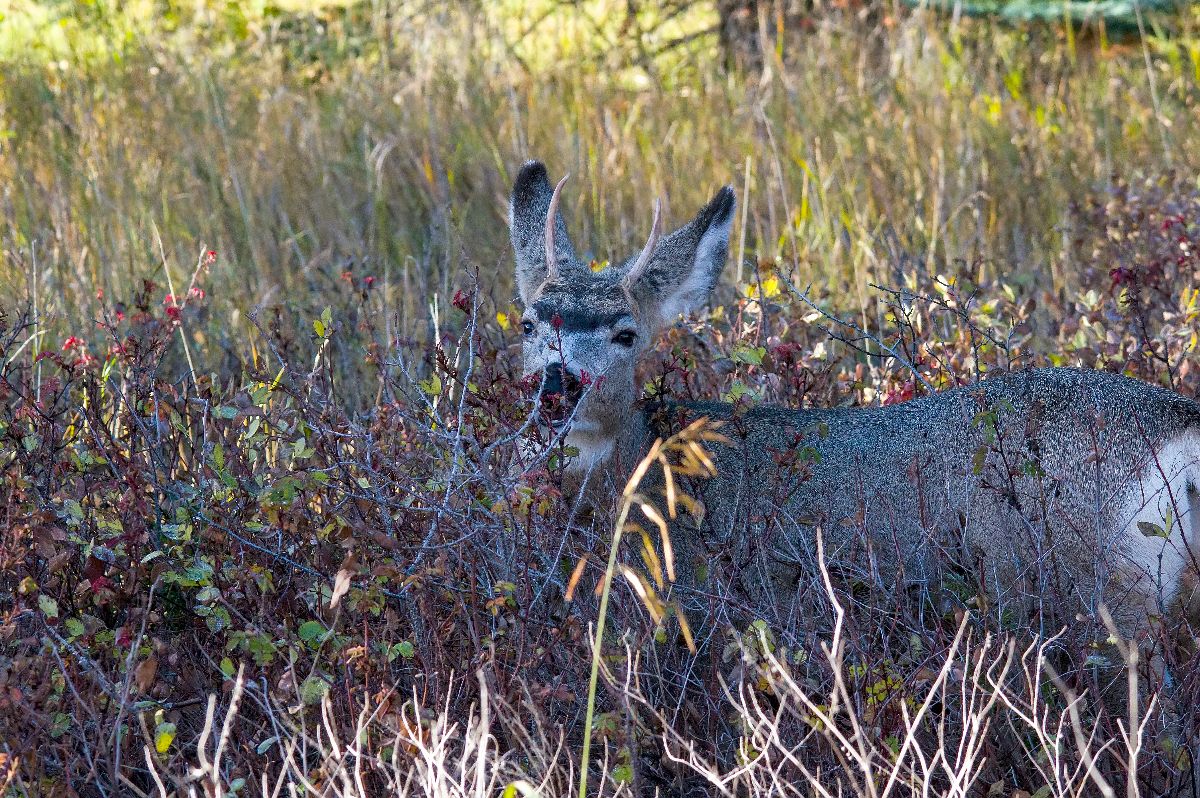
young Mule Deer buck
[exif id=”16228″]
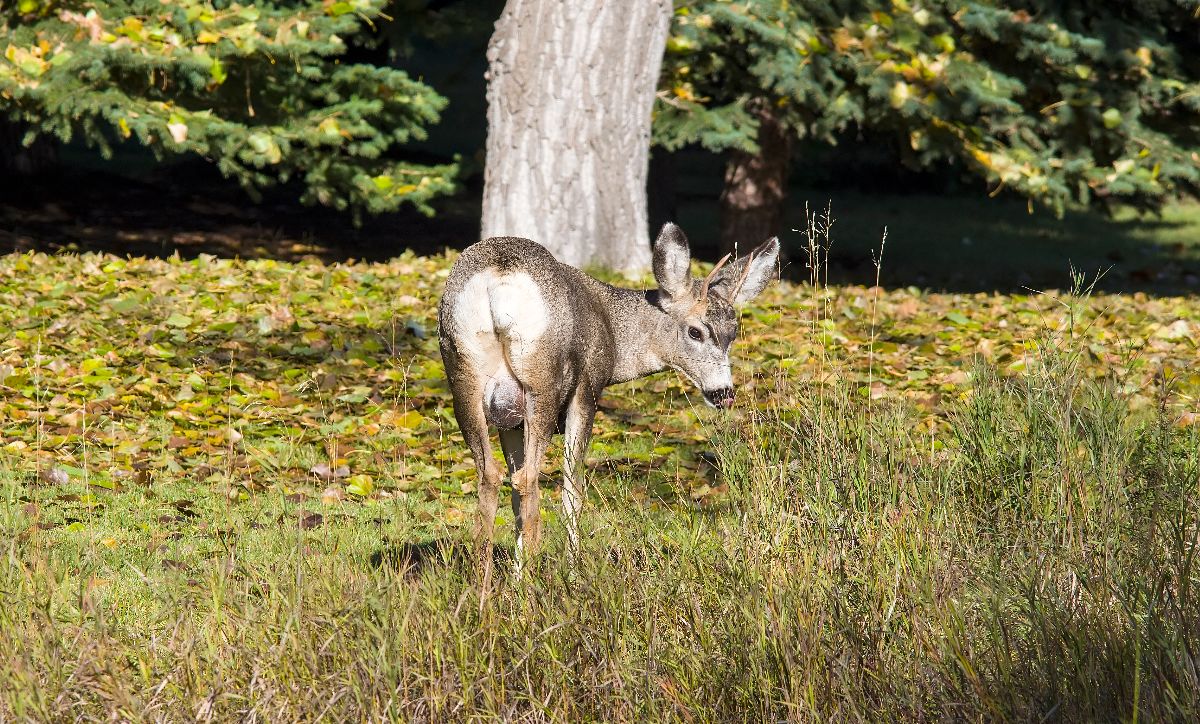
young Mule Deer buck with growth
[exif id=”16221″]
He didn’t appear to be in any discomfort or distress, but this fairly well “endowed” deer did seem quite unusual. I welcome any suggestions or explanations on what might have caused this particular anomaly to this young deer. My suspicions are that it’s some type of tumor or cyst that’s caused the swelling.
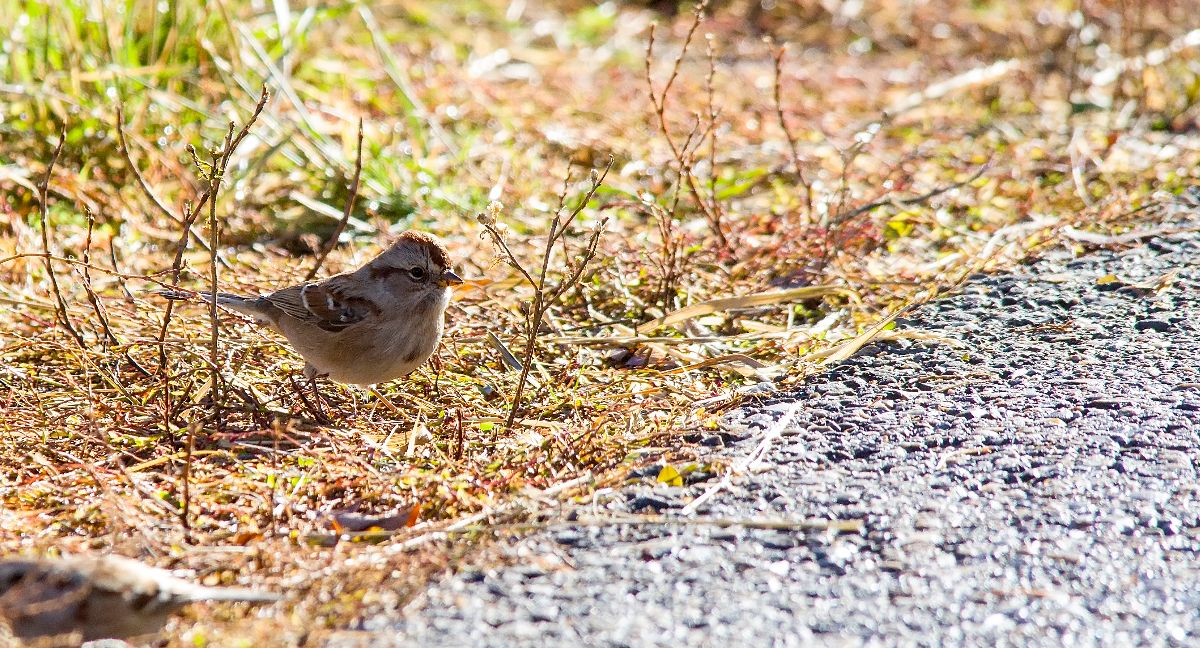
American Tree Sparrow
[exif id=”16222″]
Just as we were meeting up with our compatriots, we managed another good few minutes of looking at a couple of American Tree Sparrows feeding right alongside the pathway. These guys tend to be a lot more shy, so it was a bit surprising seeing them hold still with walkers, joggers and going by fairly regularly.
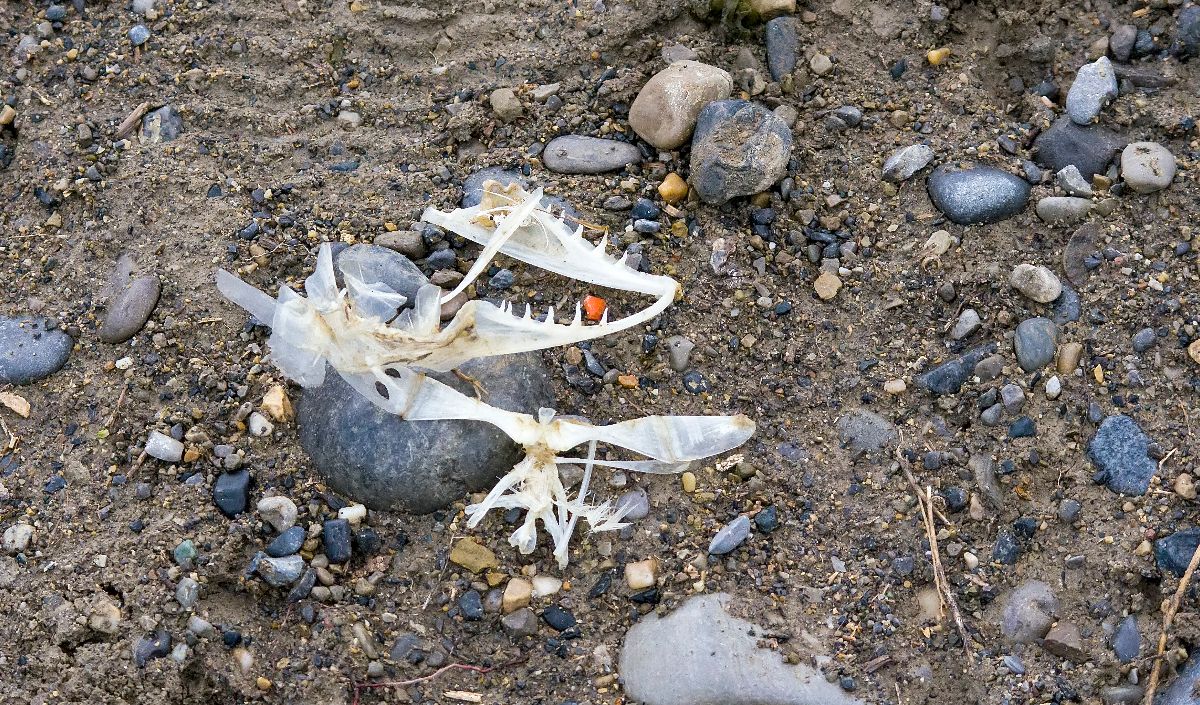
fish jaw and clavicle
[exif id=”16223″]
Another mystery that we have yet to solve was this jaw and clavicle that we found on the edge of the reservoir. Again, I have my suspicions of its provenance, but would appreciate any comments and suggestions about what species was predated here on the edge of the Glenmore Reservoir. For scale, the clavicle was about 6-7 cm across, and the jaws were about 5-6 cm from back to front.
One of the birds that I had the hardest time identifying for the first few years of fall birding were the fall plumage Eared and Horned Grebes. I can’t tell you the number of times I would misidentify one or the other, and it wasn’t until the last year or so that I finally became comfortable telling them apart.
I’m going to leave these photos unlabelled for now, and I invite comments on what the putative IDs are on each of the birds below.
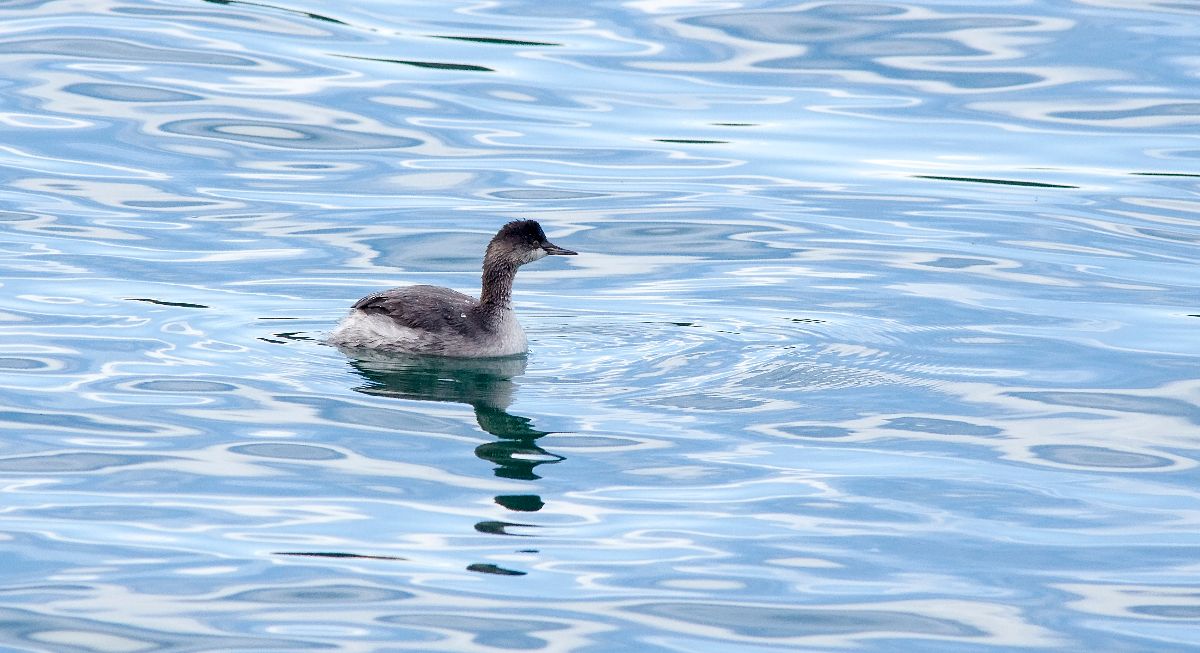
Fall Plumage Grebe 1
[exif id=”16225″]
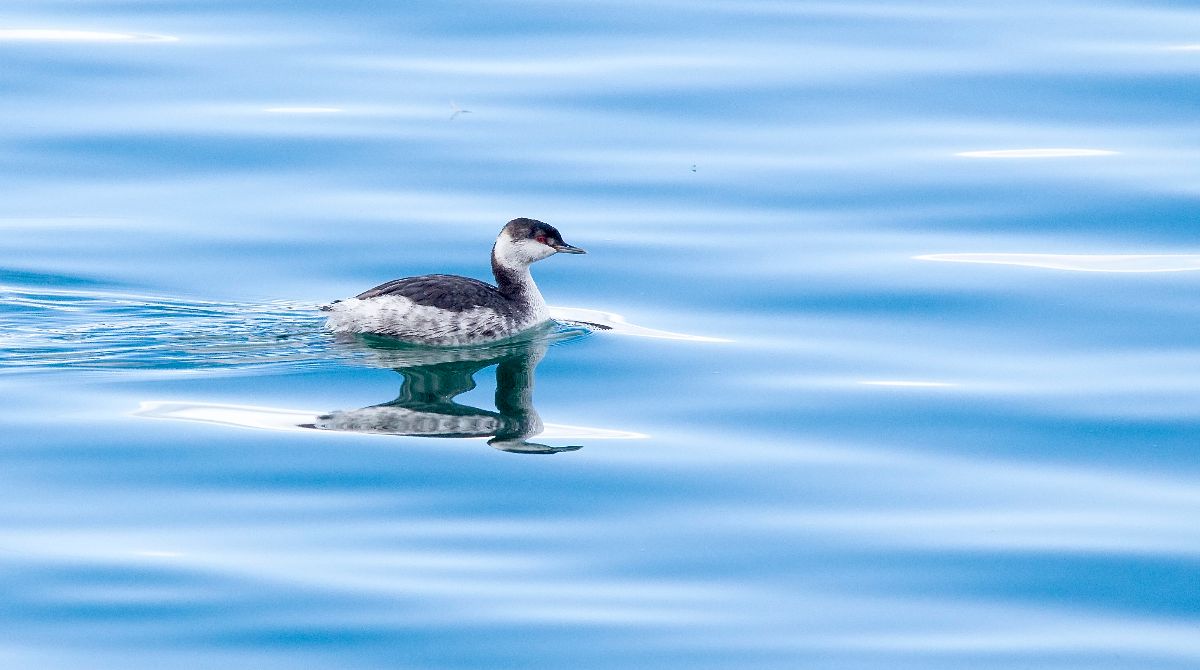
Fall Plumage Grebe 2
[exif id=”16226″]
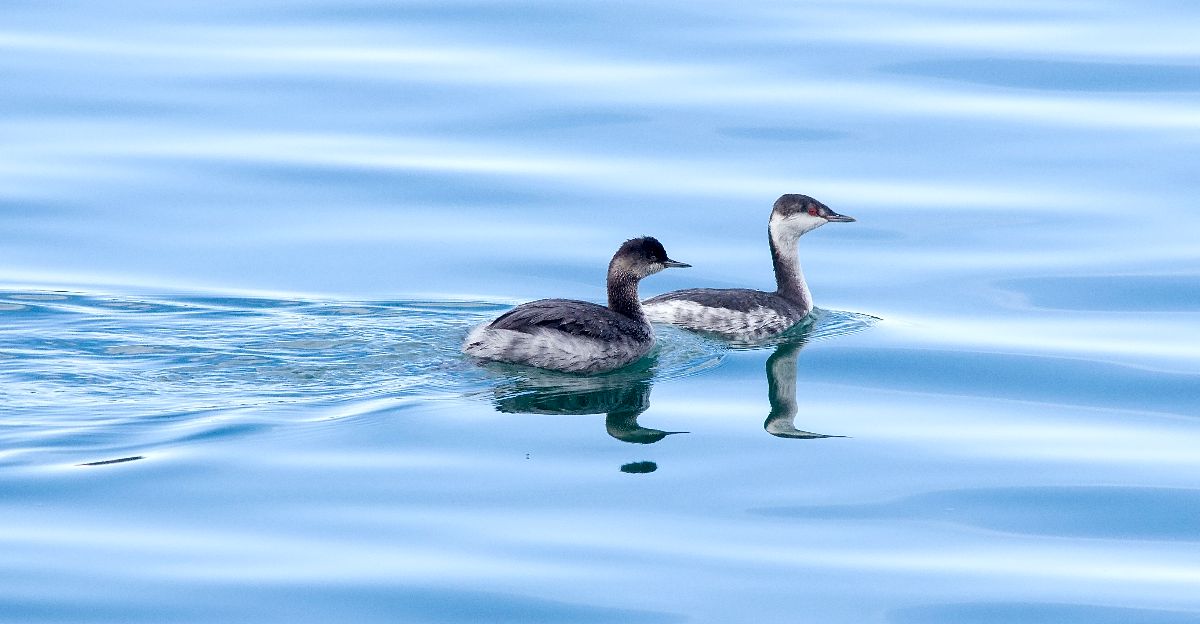
Fall Plumage Grebe 1 and 2 together
[exif id=”16217″]
When I look at a fall plumage grebe now, I look for four main features. First, I look at the head shape. Eared Grebes have a head that has a high crest at the front of the head, and slopes downward towards the back. Horned Grebes have a head that is more peaked at the back, and slopes up to that peak from the base of the bill. The second feature to look for is the shape of the bill. Eared Grebes have a pointed, dagger-shaped bill, that is ever so slightly curved upwards. Horned Grebes, on the other hand, have a thicker, more bullet-shaped bill, tipped with a very tiny white point.
Next I look at the plumage on the neck, back, and sides. An Eared Grebe has a much darker neck and face, with less distinct transition between white and black, and a more graduated blending between the back and the sides. The Horned Grebe, once again, is very sharply divided white and black on the face, neck, and usually on the back and sides. Lastly, the Eared Grebe has a light orange iris, and the Horned Grebe has a blood-red iris.
Posted by Bob Lefebvre
Catching up with some great autumn photos of Calgary Birds and Mammals, taken by Tony LePrieur from September 25 to October 16, 2016. The locations were the Inglewood Bird Sanctuary, Carburn Park, Fish Creek Provincial Park, and the Weaselhead Nature Area.

Boreal Chickadee, Bebo Grove, FCPP, September 25, 2016. The bird has no tail. Birds don’t molt all their tail feathers at once, so this indicates it probably survived an attack of some kind.

Great Horned Owl, Bebo Grove, FCPP, September 25, 2016. These resident owls are fairly common it the city. Pairs will be spending the days resting on their winter roosts now, and by February (or sometimes even January) they will be on their nests, incubating eggs.

Great Blue Heron, Inglewood Bird Sanctuary, October 16, 2016. The herons have usually all migrated by mid-October, but a few may stay later.

Harris’s Sparrow, seen at the south end of the big bridge over the Elbow River in the Weaselhead on October 16, 2016. The bird was seen for at least a week, from October 16 to October 25. These Sparrows mostly migrate well east of Calgary and are a bit of a rarity here. They sometimes overwinter, so it is worth looking for.

American Tree Sparrow. These arctic breeders are passing through here now and some overwinter here.

Dark-eyed Junco. These sparrows are pretty common here in the winter and can be seen in residential areas right now, often feeding on the ground under bird feeders.

American Robin bathing.

American Robin. They passed through here on migration in huge numbers a few weeks ago, but there are always quite a few that overwinter here, mostly in the river valleys.

Northern Flicker (male). A migratory woodpecker, but again there are always lots in Calgary in the winter – either some local breeders that overwinter, or birds that bred farther north and migrated this far. They will readily come to suet and nut feeders.

Downy Woodpecker (male). A year-round resident that also will come to feeders.

Coyote.

Black-backed Woodpecker. A bit of a rarity in the city, they are occasionally seen in the west end of Fish Creek Park, from Bebo Grove to Shannon Terrace. This one was photographed there on October 23, 2016.

Pileated Woodpecker (male). Another resident woodpecker.

Rough-legged Hawk. This is the common buteo in our region in the winter. They have arrived in good numbers from their northern breeding grounds. Most commonly seen outside the city, especially west of the city.

Black-capped Chickadee. Year-round resident.

Muskrat. They are active all winter in open water.

Mule Deer buck.
See more of Tony’s Photos on his Flickr page.
Share your bird photos from the Calgary area. Just email them to birdscalgary@gmail.com.
Posted by Dan Arndt
The Western Headworks Canal (known to many of us simply as the Calgary Irrigation Canal, or Bow River Irrigation Canal) is an amazing area to bird any time from early spring all the way through to the beginning of autumn. The canal itself provides foraging and feeding opportunities to all varieties of dabbling ducks throughout the breeding season, while the established trees and shrubs along the edge of the canal are home to no end of songbird species throughout the year.
There is a very special time of year though, just after the first of October, when the Western Irrigation District stops drawing water from the Bow River and allows the canal to drain for the winter. It is at this time that the canal becomes prime feeding habitat for a few more exotic species. Unusual and rare gull species are often found among the flocking Ring-billed Gulls, late migrating shorebirds feed along the extensive mudflats, and the tail end of songbird migration can often bring exciting birds such as Rusty Blackbirds and the occasional Harris’ Sparrow along the edges of the canal. All of this excitement is over far too quickly for some as the water levels rapidly deplete over the course of the first two weeks following the drainage.
According to the Western Irrigation District website, “the Western Irrigation District provides irrigation water to over 400 farms and 96,000 acres of land, and supplies municipal water to over 12,000 people in four different communities through 1,200 km of canals and pipelines. Like other irrigation districts in Alberta, the WID operates under the rules and procedures of the Irrigation Districts Act. The WID is headquartered in Strathmore, Alberta, which is approximately 40 kilometers east of Calgary.”
On October 4th, I joined the Friends of Fish Creek to walk the canal a few days after it had begun draining. For one reason or another, this year seemed to have fewer birds than I remember in the past, and the water seemed much lower this early on than previously. That said, the walk started off on a high note while I watched this Northern Flicker feeding on berries in a shrub while I waited for the group.
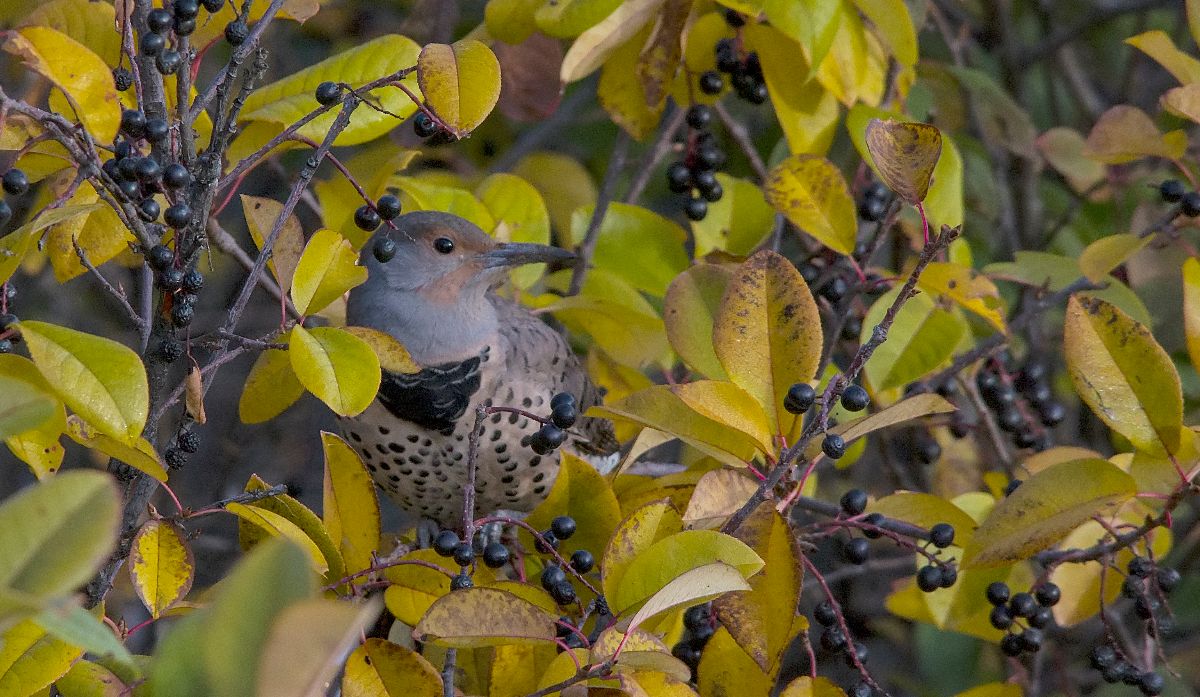
Northern Flicker
[exif id=”16160″]
Almost immediately upon reaching the edge of the canal, we began seeing some of the diverse assemblage of waterfowl that feed along the canal. The most common of course was the Mallard, with almost all of the males having returned to their brilliant green-headed breeding plumage.
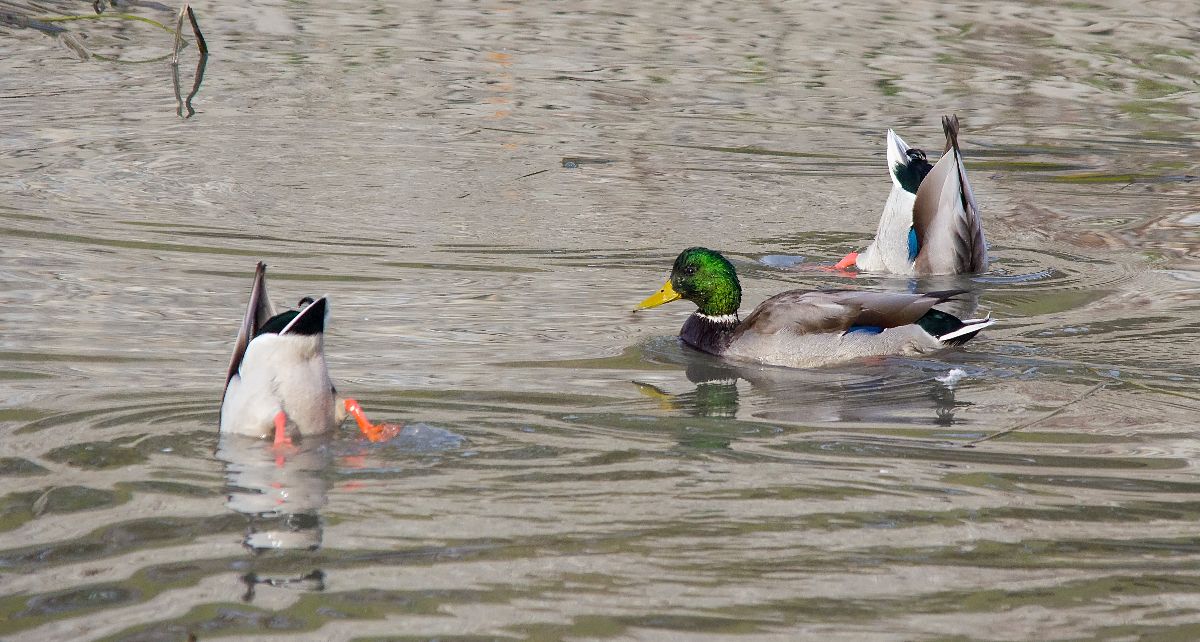
Mallard
[exif id=”16170″]
A lone female American Wigeon dabbled in the shallow water, barely lifting her head to check us out as we walked by.
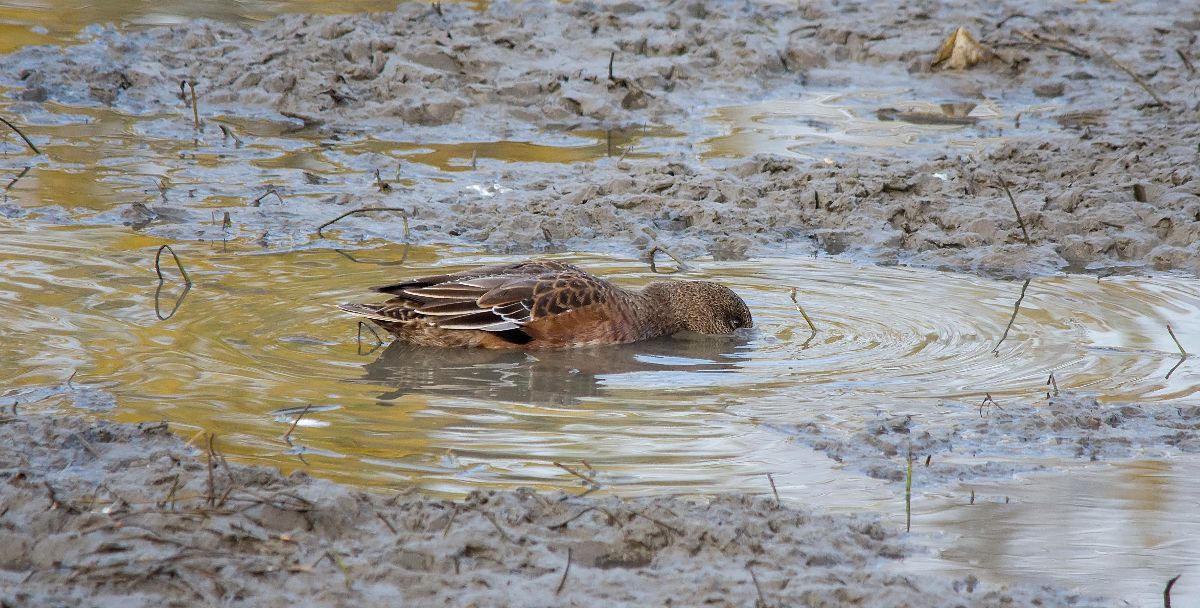
female American Wigeon
[exif id=”16158″]
A little further on, a pair of female Northern Shoveler floated by, followed closely by a pair of female Green-winged Teal.
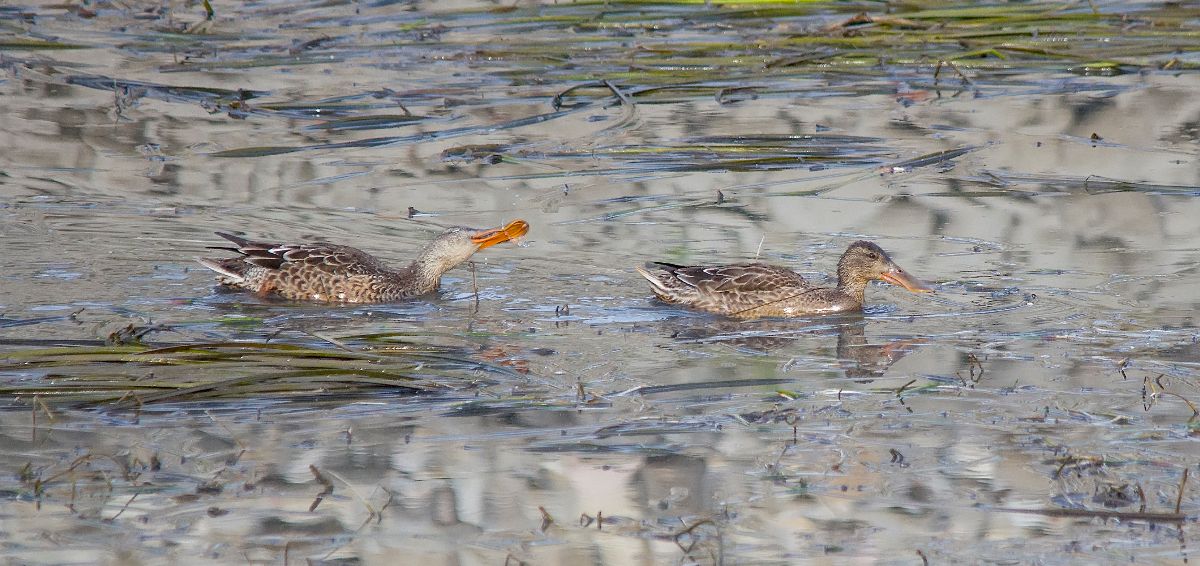
female Northern Shovelers
[exif id=”16173″]
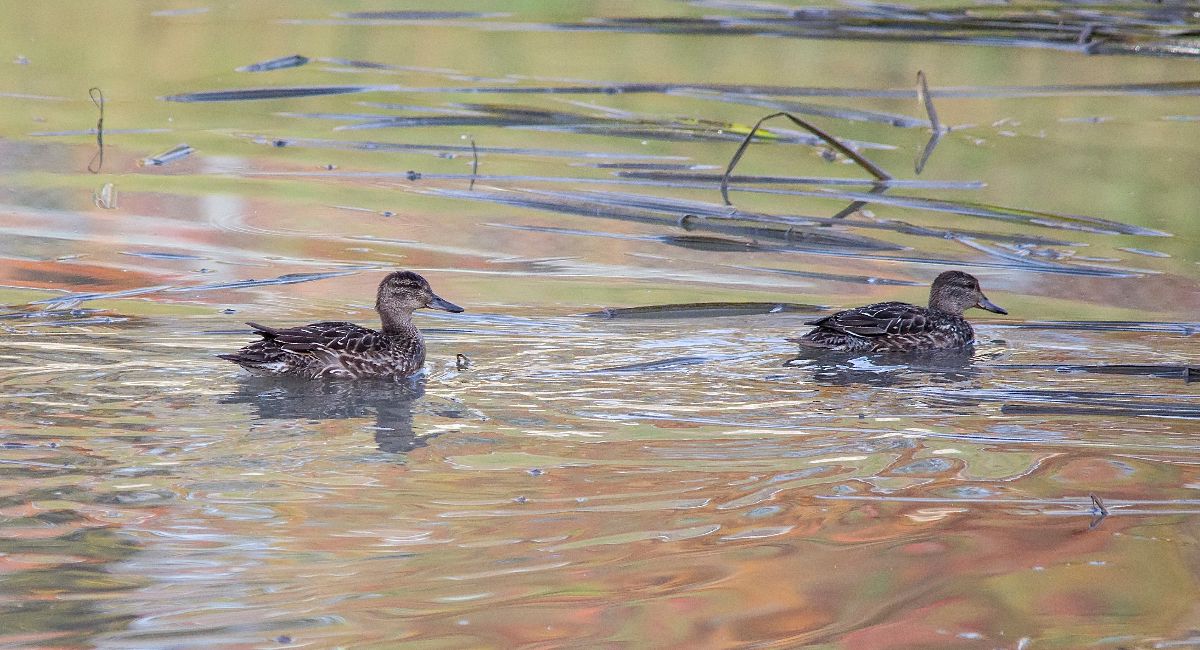
female Green-winged Teal
[exif id=”16172″]
The highlight of the waterfowl though are always the Wood Ducks. A fair number of them were found feeding along the canal early in the walk. As we continued down the canal, something spooked them and they flew up the canal and our of sight. These birds are likely from the same stock found at the Inglewood Bird Sanctuary, where they are known to breed each year.
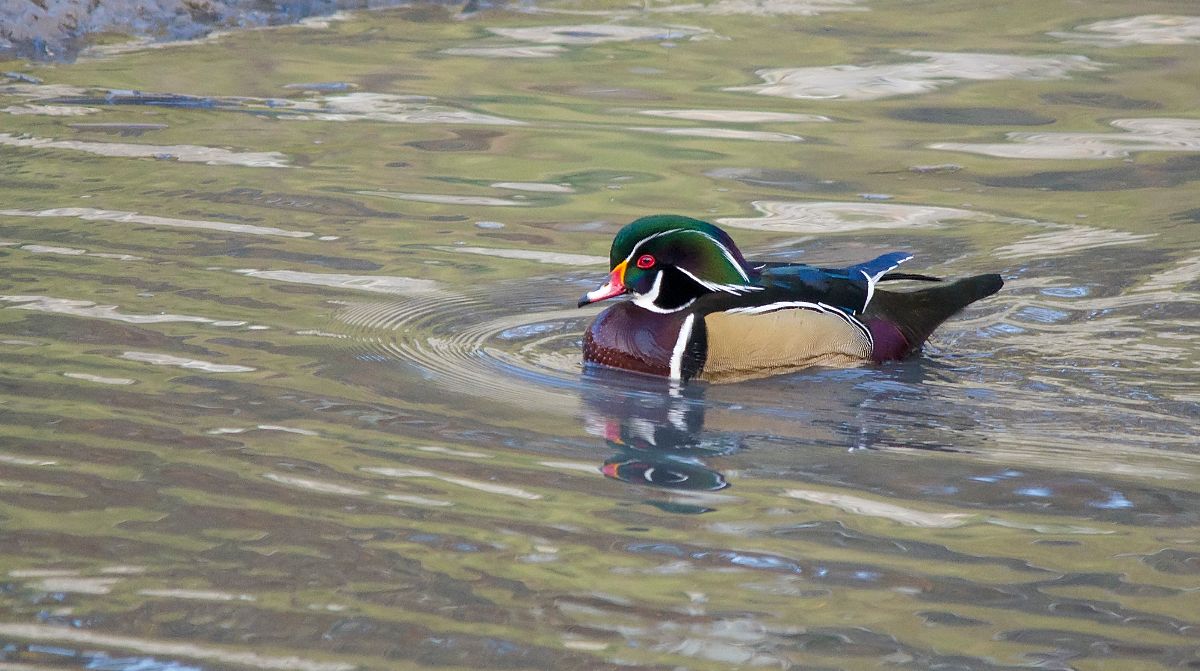
male Wood Duck
[exif id=”16159″]
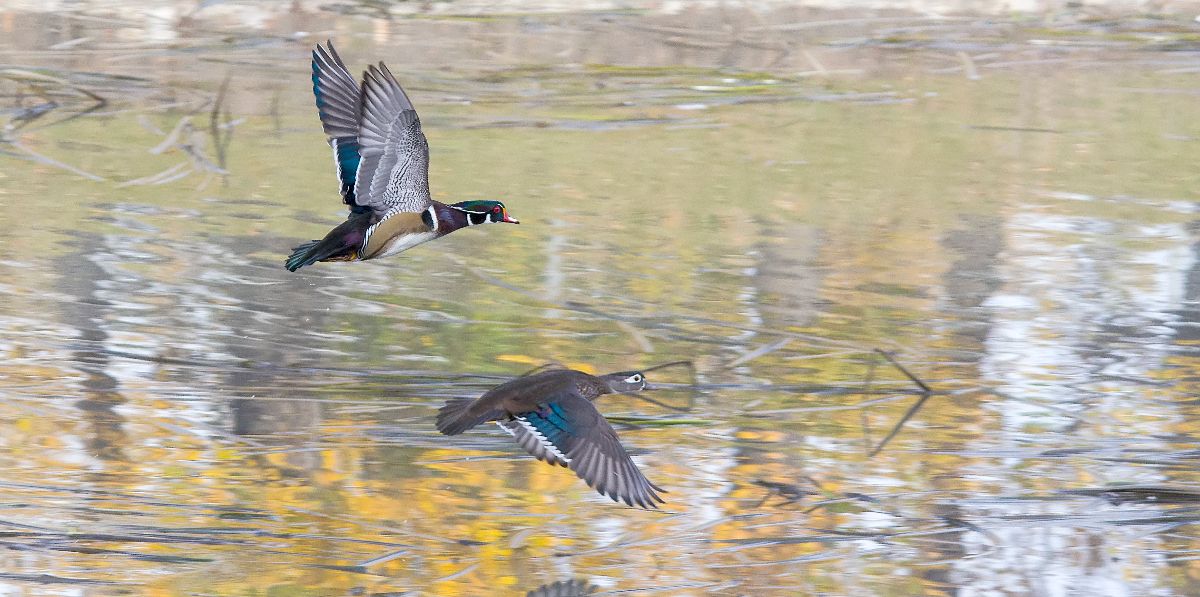
male and female Wood Ducks
[exif id=”16171″]
It’s always a bit of a surprise to see what shorebirds we can find down along the canal. It’s one of the best places to get good, close looks at Greater Yellowlegs, often in large numbers.
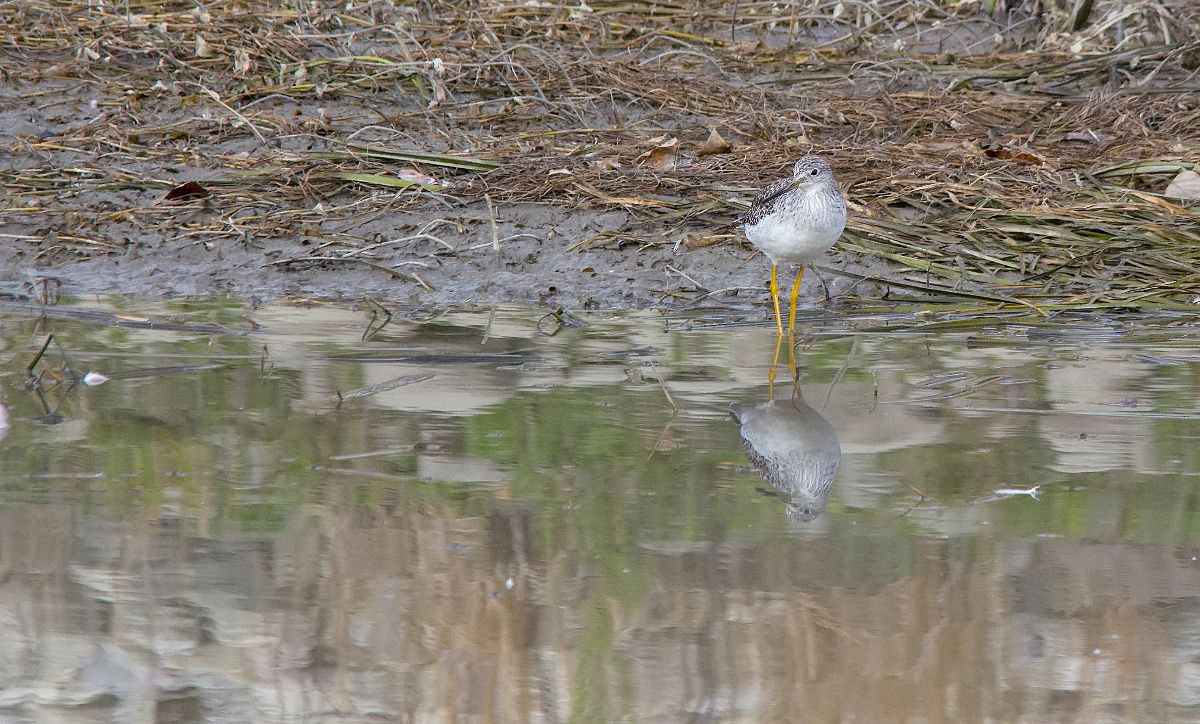
Greater Yellowlegs
[exif id=”16165″]
Less often though do we get Wilson’s Snipe. This year there seemed to be more than a few feeding along the canal.
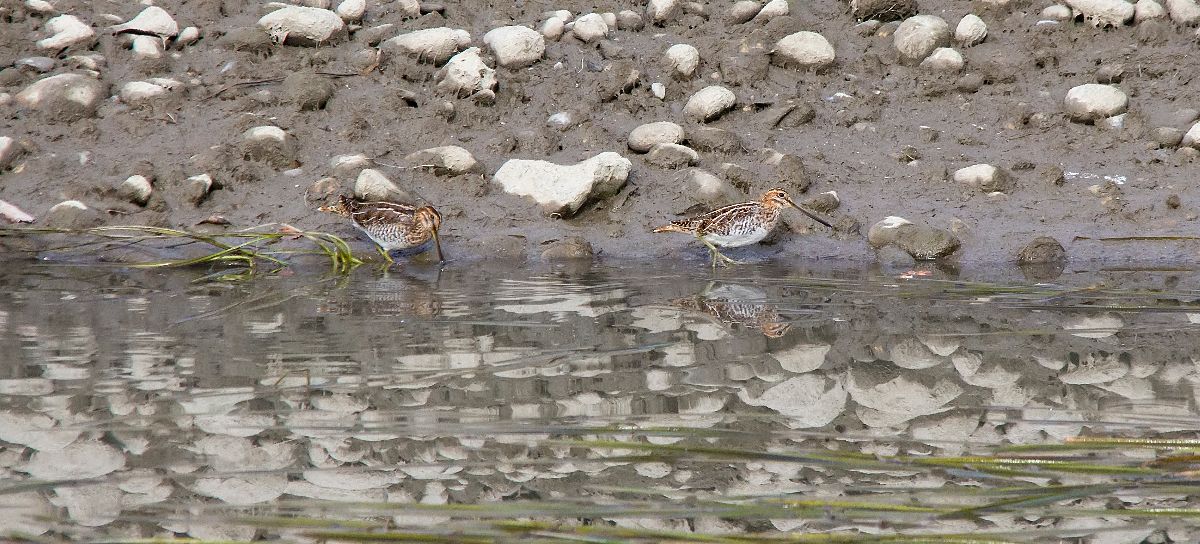
Wilson’s Snipe
[exif id=”16167″]
It was a little later on that we got a good look at what may have flushed the Wood Ducks earlier in the day. This female Merlin swooped in and perched in the trees right above us for a few moments before flying on and continuing her hunt.
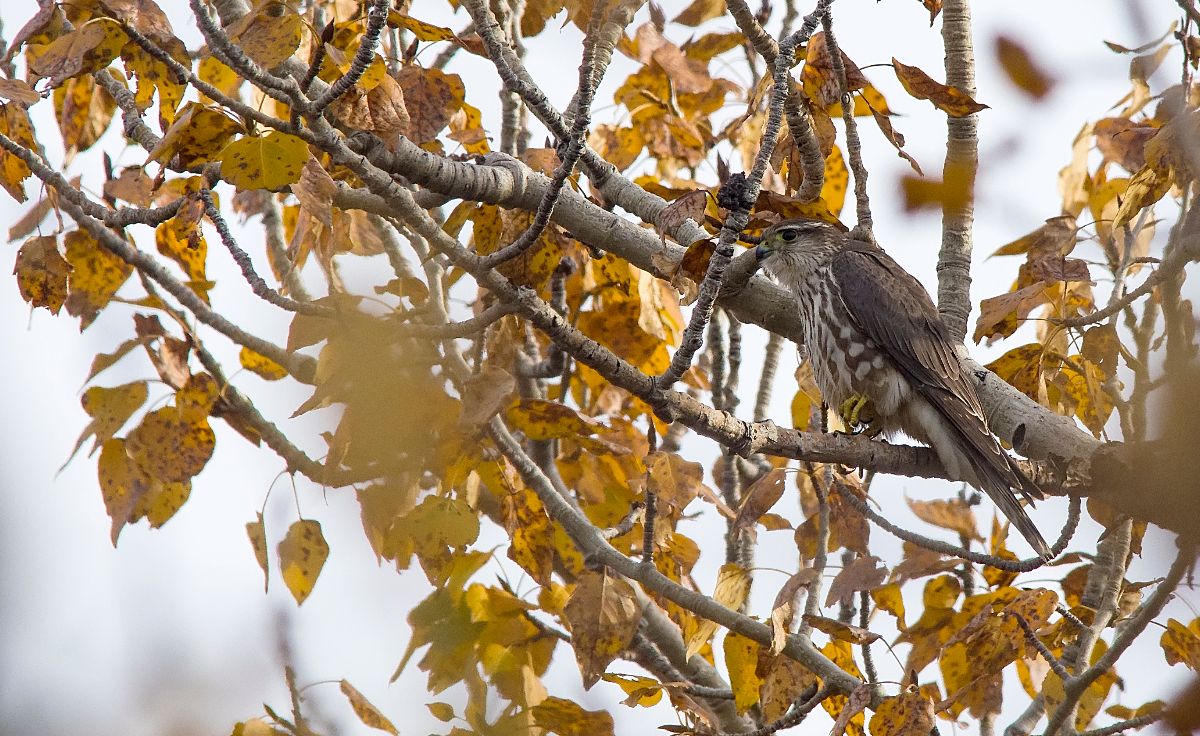
female Merlin
[exif id=”16169″]
There is one major benefit to the large numbers of Rock Pigeons that take residence in our urban centers here in southern Alberta, but it’s never a pretty sight to see. They make a great meal for any number of hawks, falcons, eagles and owls. Every once in a while though, one of these raptors gets chased off a fresh kill by a family of corvids. It is quite possible that this was a kill stolen from our female Merlin above, or from the Sharp-shinned Hawk that as giving us continuous fly-bys all morning.
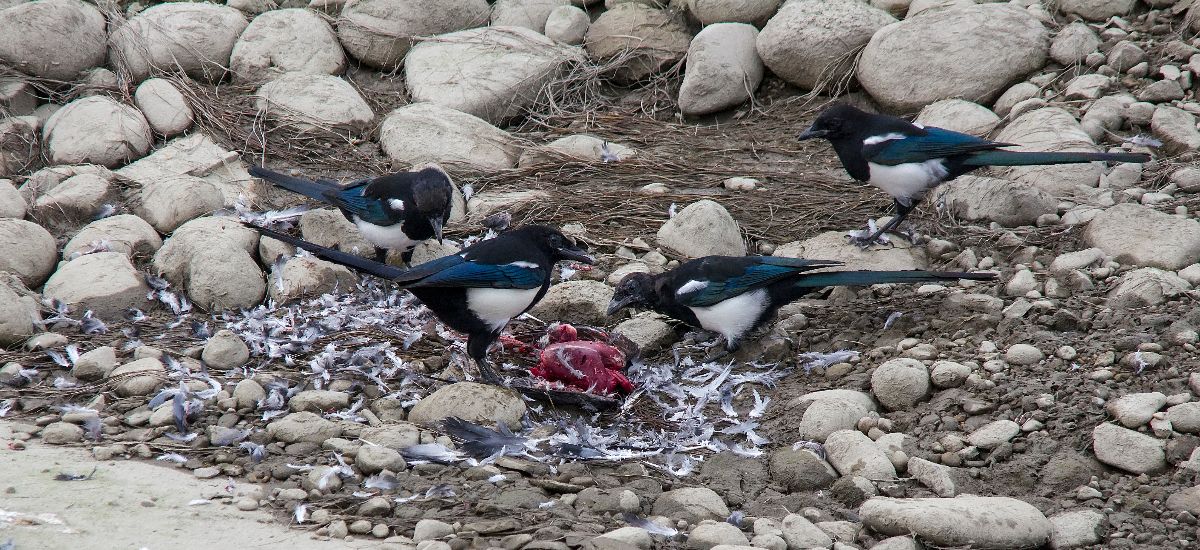
Black-billed Magpies scavenging Rock Pigeon remains
[exif id=”16164″]
While we kept our ears and eyes sharply focused on the shrubs nearby, and our alertness really paid off. We heard a handful of American Tree Sparrows, saw few Dark-eyed Juncos, and caught decent looks at what are likely to be our last Yellow-rumped Warblers for the year.
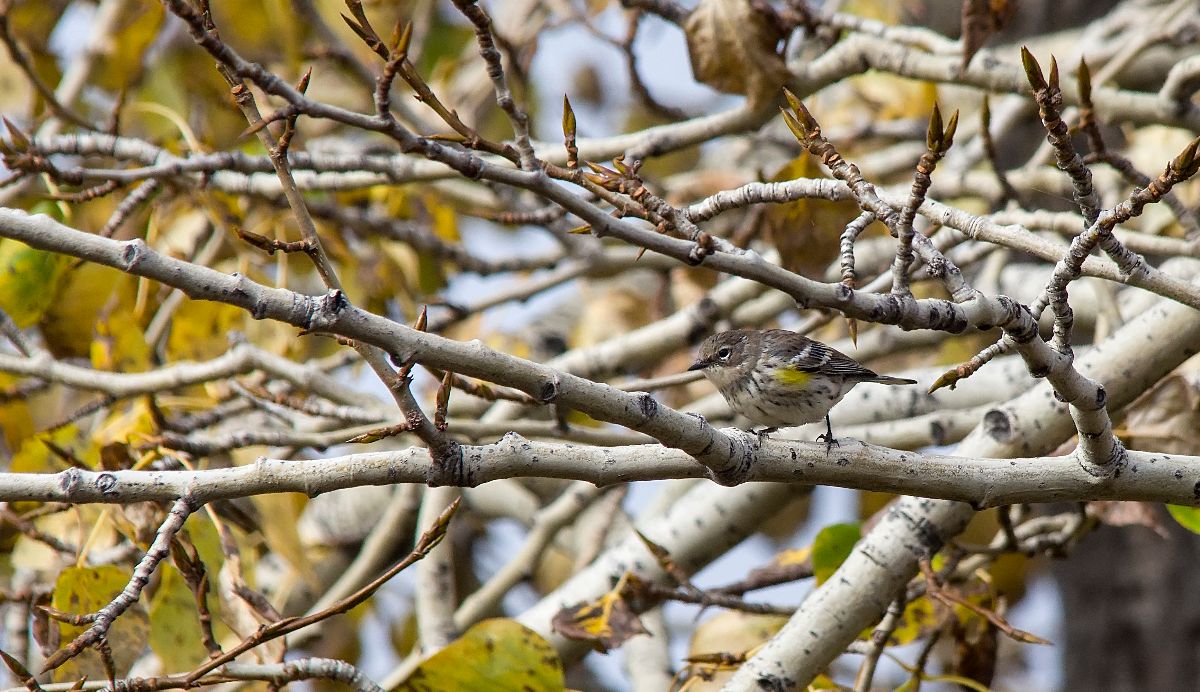
Yellow-rumped Warbler
[exif id=”16162″]
It always pays off to check out the gulls down on the canal though. As we walked the canal, we found hundreds of Ring-billed Gulls feeding in the shallow water.
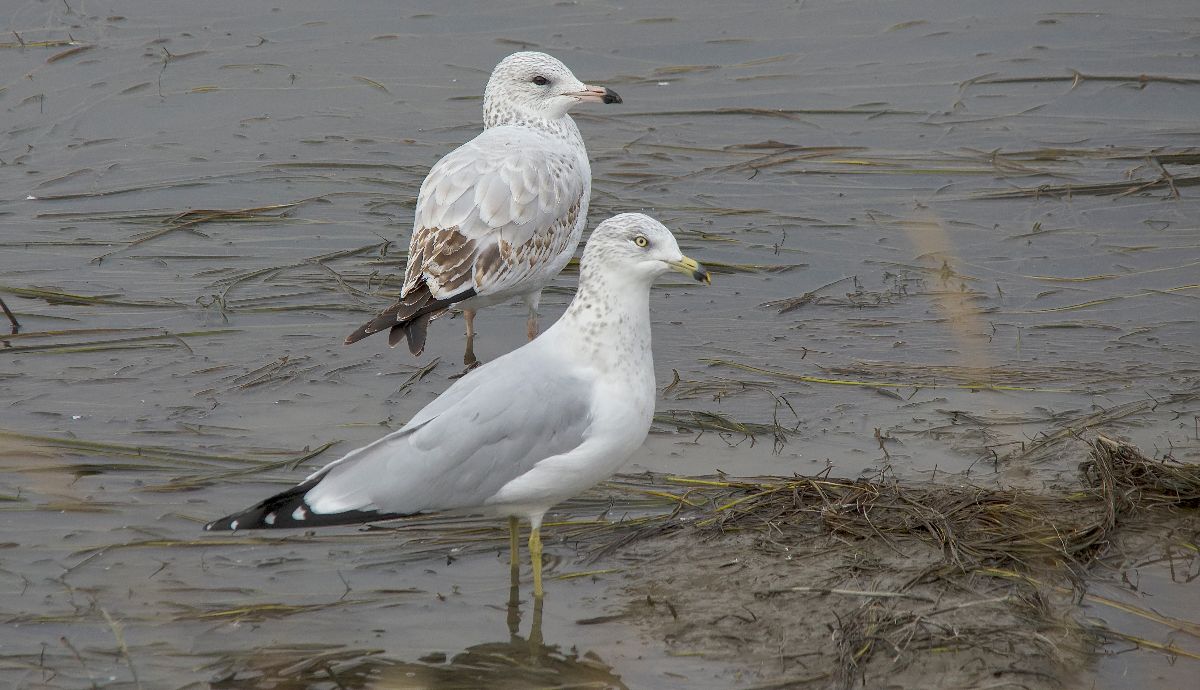
immature (back) and adult (fore) Ring-billed Gull
[exif id=”16163″]
One of our sharp-eyed participants pointed out this little Mew Gull all by itself. They feed a little bit differently than Ring-billed Gulls tend to, but the real differences are the major field marks. You might note the plain yellow bill, smaller, rounded head, and overall “softer” features than the Ring-billed Gulls above.
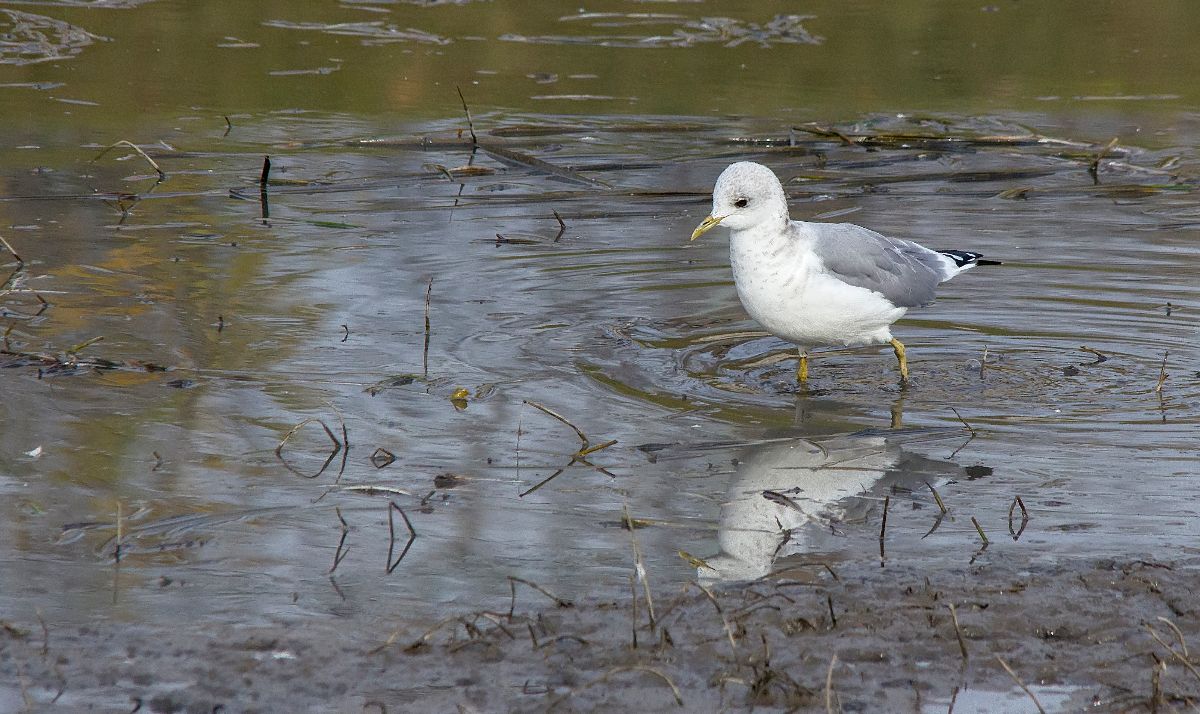
Mew Gull
[exif id=”16168″]
By Terry Korolyk
Living in the south end of Calgary since 1993, I have had much cause to bird and explore the area which I call the “Hills” which is directly south of Calgary. For birding purposes, it offers a fairly widespread type of habitat. We could probably define the area as south of Spruce Meadows Trail and bounded on the west by Highway 22; on the east by Highway 2A, and, on the south by Highway 549.
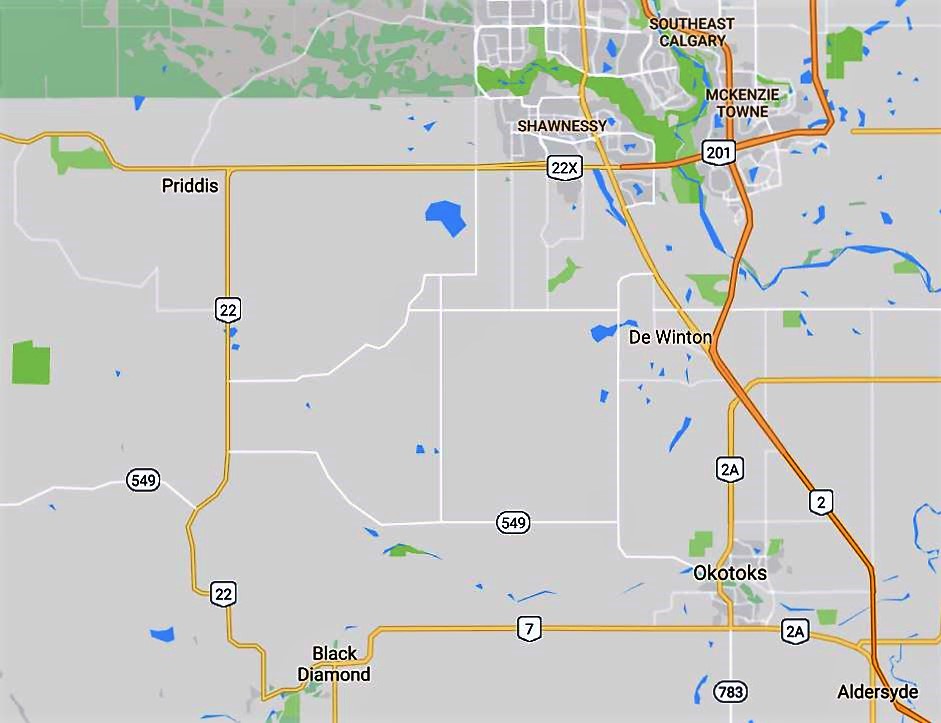
Starting in the southwest corner of the Highways 2A-Spruce Meadows Trail junction is a fairly well-birded and well known slough known to some as Sheriff King Slough, because it is actually on Sheriff King Street accessed from Spruce Meadows Trail. In the days of some of Calgary’s older birders in the 1970s and 1980s, it was known as the Priddis Radio Towers Slough. The past few years have seen the slough attain fairly-high water levels due in large part to the City’s Water Management practices because of the 2007 and 2013 floods. Prior to 2007, the slough held low water levels. Then, it was probably one of the best shorebirding sloughs in our area attracting all the basic migrating shorebird species such as Semipalmated, Baird’s, Least, and, Pectoral Sandpipers, and, both, Greater and Lesser Yellowlegs and Solitary Sandpiper. Uncommon species found there included Western Sandpiper (more than once), Red-Knot, and, White-rumped Sandpiper. It also held most of the common Duck species.
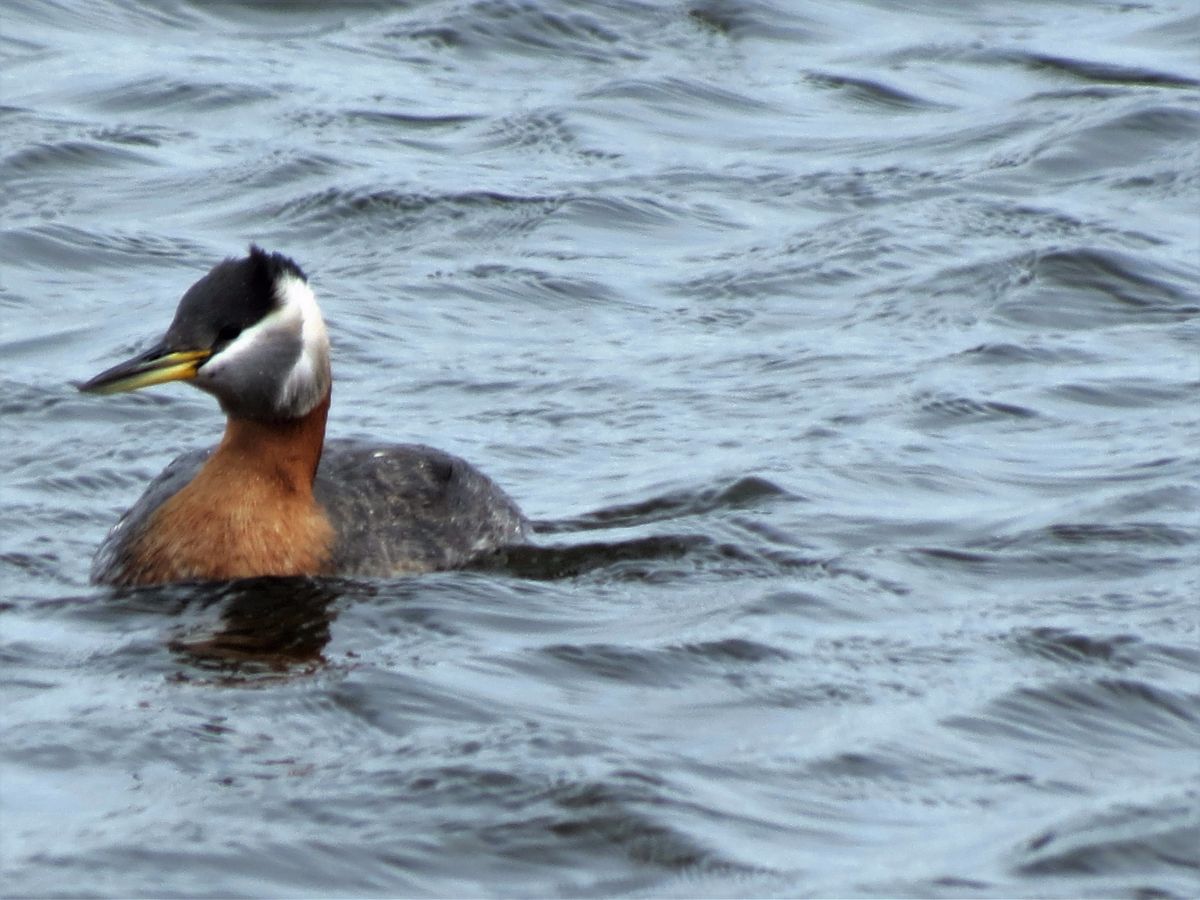
Adult Red-necked Grebe. Common Summer resident on Sheriff King Slough. April 28, 2016.
These days the slough is now almost the complete reverse of what it used to be. Water levels are now too high to hold migrating shorebirds and it is almost completely devoted to waterfowl. Eared Grebes have been communal nesters here in recent years, and, both Red-necked and Pied-billed Grebes really took to the slough in 2015 and 2016. Ospreys are resident around the slough and Double-crested Cormorant, a species that is rapidly-expanding its range in the Calgary area, can be found here. Almost all the basic Duck species and Canada Goose are resident. Great Blue Heron should be somewhere around, and, recently Black-crowned Night Heron, has been expanding its range and has slowly crept into some waterbodies along the eastern perimeter of the area. Breeding has not been confirmed yet at Sheriff King Slough.
South of Sheriff King Slough lies agricultural land and the Pine Creek valley. Directly south of the Pine Creek valley; hilly, forested land is inaccessible, but, on this area’s west flank lies the Sirocco Golf Course. Remainder of the area of the Hills in the east is predominantly agricultural land, marsh, and, some woodland. Being near Spruce Meadows, naturally, there are many Stables and other such businesses devoted to Equestrian activities. Westward from Spruce Meadows lies Lloyd Lake formerly known as Red Deer Lake. Lloyd Lake is an outstanding location for seeing marsh and other water-loving birds and in recent years has held huge colonies of Franklin’s Gulls, Eared Grebes, and, American Coots. Public access, however, is no longer allowed at Lloyd Park, and, one must pay to gain access.
Between Spruce Meadows and Lloyd Lake, Highway 773 runs southward through the Hills bisecting the area as far as Highway 549 which continues westward to Highway 22. The central and western parts of the block offer some of the most stunning scenery in the Calgary area. The further westward you travel, the more you climb in altitude. As well, from the central section westward, there are some densely forested tracts and a variety of sloughs and other habitats. Near the western border, 192 Street bears directly northward from Highway 549 taking you through open grassland in to increasingly more forested terrain, then more grassland, ending up with mixed forest and Coniferous growth near Spruce Meadows Trail.
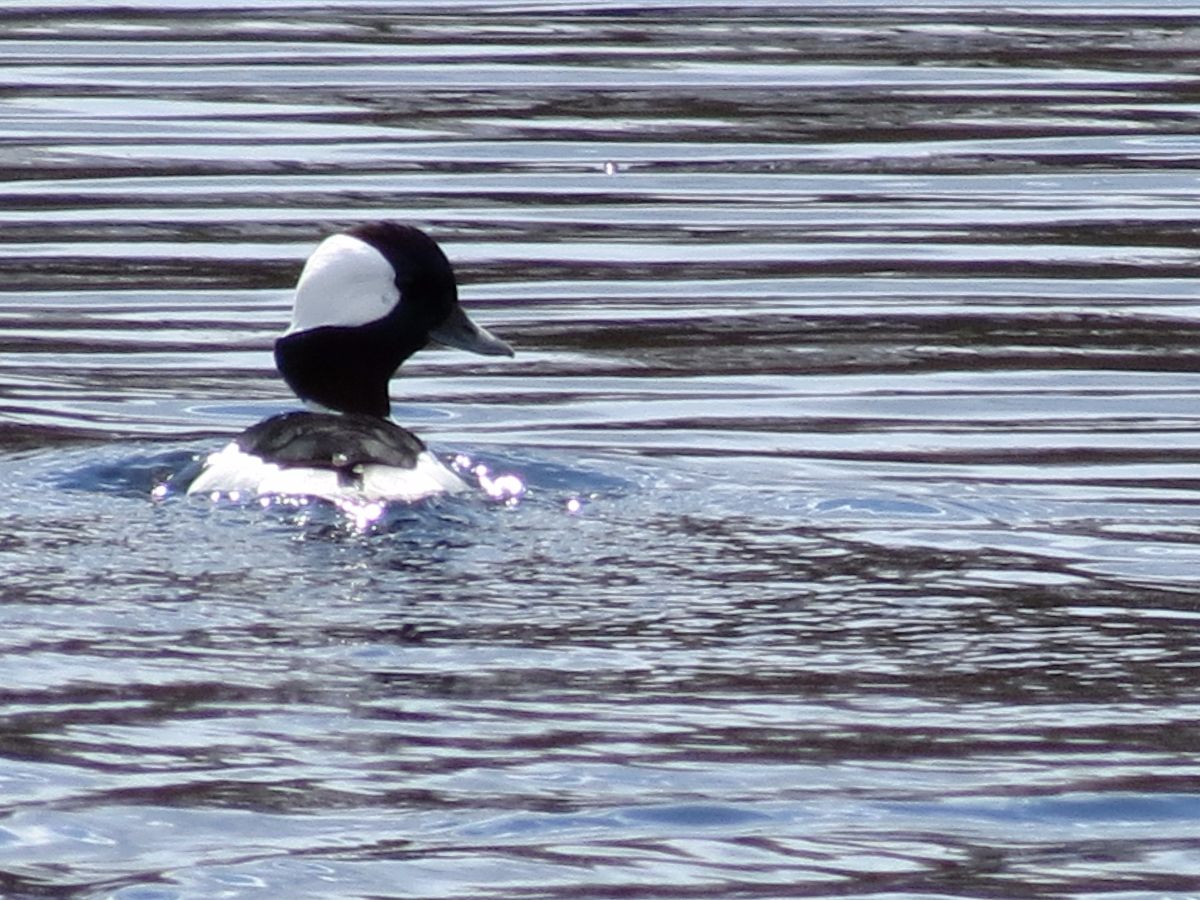
Considering much of the Hills is open hilly territory, birds encountered in this type of habitat include Savannah, Clay-coloured, and Vesper Sparrow. There are many Bluebird Trails along the roads that wind their way through the hills meaning, of course Tree Swallows and Mountain Bluebirds. Black-billed Magpies are year round residents and breeding season sees them joined by American Crows. Common Ravens are a daily sight, many of them riding the ridgetops and valleys as they come and go from the Landfills or other attractions to the east.
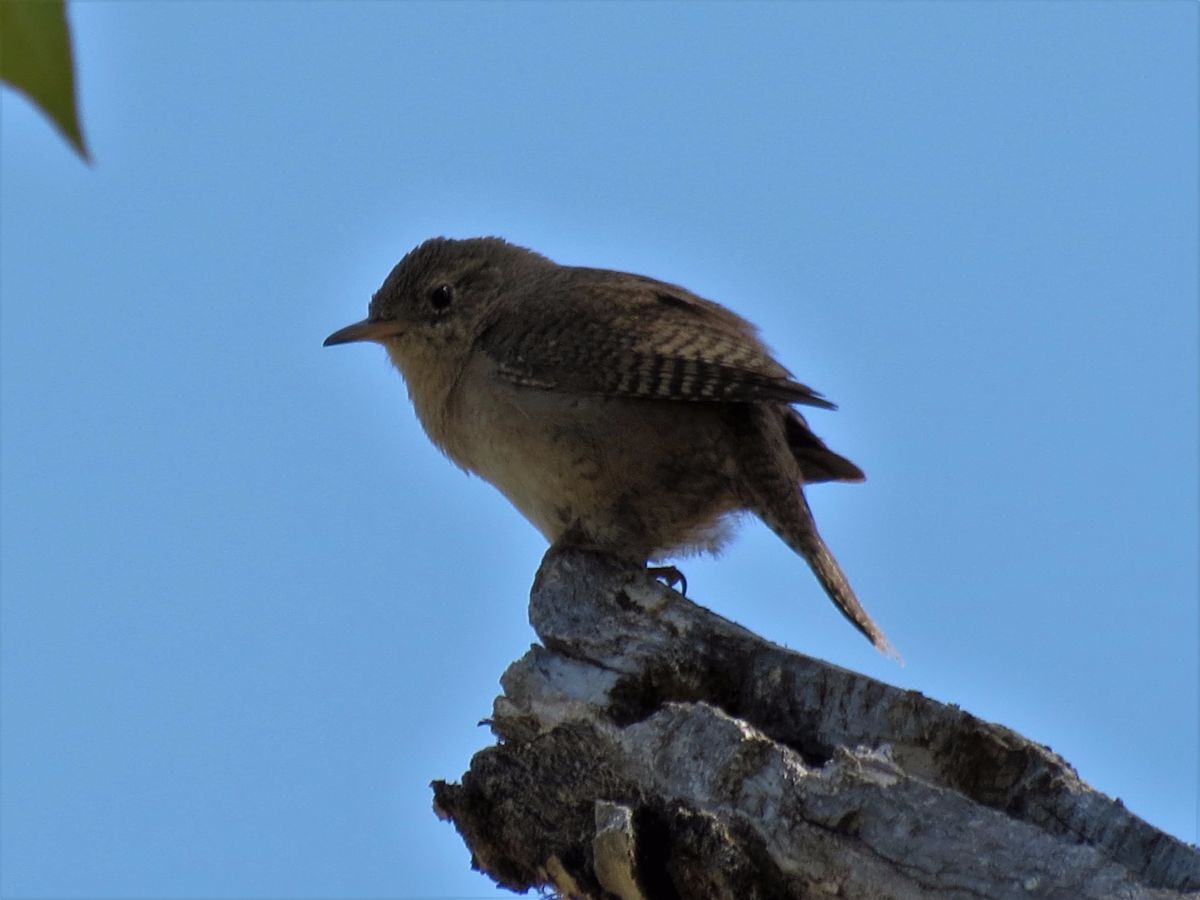
Common birds of the deciduous woodlands are American Robin, Yellow Warbler, Western Wood Pewee, Least Flycatcher, Baltimore Oriole, American Goldfinch, and, House Wren. In fact, the Hills could very well be the House Wren capitol of Alberta. Brewer’s Blackbirds line the roadsides south of Sheriff King while Red-winged Blackbirds are common marsh dwellers with large colonies at Lloyd Lake and at the large marsh on Spruce Meadows Way. Yellow-headed Blackbirds are not as common. Sora Rails are also common marsh dwellers.

All of Green-winged, Blue-winged, and, Cinnamon Teal are the common ducks of shallow, muddy pools, particularly on the east side of the block. This holds true on the same waterbodies of the west end. Deeper, larger waterbodies in the west end can hold Lesser Scaup, Bufflehead, American Coot, Ruddy Duck and others. The serene woodland marsh and pond at the south end of 160 Street may be the only waterbody in the area that annually hosts Canvasback. Sloughs in this extreme more pristine west end may also host Ruddy Duck, Ring-necked Duck, Hooded Merganser, Barrow’s Goldeneye, and Horned Grebe.

Some songbirds that can be found in this wilder west end include Gray Catbird, Lincoln’s Sparrow, Song Sparrow, Rose-breasted Grosbeak, Orange-crowned Warbler, Yellow-bellied Sapsucker, Pileated Woodpecker, and, Tennessee Warbler which seems to be ever expanding its range eastward from the foothills. Cedar Waxwing can be seen flycatching around almost any waterbody in the west end, and, Alder Flycatcher can be found in the Willows around the marsh at the south end of 160 Street. Both HAMMOND’S FLYCATCHER and Pacific-Slope Flycatcher have been seen in migration in the willows on the east side of this slough while another sighting of interest here was a flock of more than 30 Eastern Kingbirds flycatching at this slough one day in the Fall of 2015.
Some other interesting songbird sightings in the hills include Crossbills along the north stretch of 192 Street; a LOGGERHEAD SHRIKE at the Springwell Farms Ponds at 64 Street and 242 Avenue S.W.; Sprague’s Pipits some years in the open grasslands; a BREWER’S SPARROW one year in June on the high south-facing slope on 1119 Drive starting the descent down to 192 Street; PURPLE MARTINS at an acreage off 160 Street on the south descent; a Western Kingbird just west of Springwell Farms; Say’s Phoebes; a Provincial record late Fall Eastern Phoebe(Sept. 25, 2008) at a small pond in the southeast corner of the 1119 Drive-192 Street intersection, and, a reported VAUX’S SWIFT at an acreage south of Spruce Meadows.
To be watched for is BLACK-HEADED GROSBEAK. This species, which used to be found only in the extreme southwest corner of the province, seems to have been slowly pushing northward through the foothills, being reported now almost annually somewhere southwest or northwest of Calgary. In the Summer of 2016, a bird was clearly heard singing across the road from a marsh on 192 Street just south of 242 avenue. At a marsh further south of that location, a bird that sounded like a SUMMER TANAGER sang in June of 2013.
There have also been many interesting non-Songbird records in the Hills. For instance one cool November morning I was driving to a nearby Shopping Centre when I noticed a Loon flying above the car off to the left. It was not that high off the ground, but, I was unable to get a clear look at it, but was able to see that in the direction it was going it had a very good chance of coming down in Sheriff King Slough which was only a couple of miles further southward. I dropped my wife off to shop and went over to check, and, sure enough, there was the Loon alright, but even better, it was a RED-THROATED LOON, the most uncommon Loon in the Calgary area other than Yellow-billed.
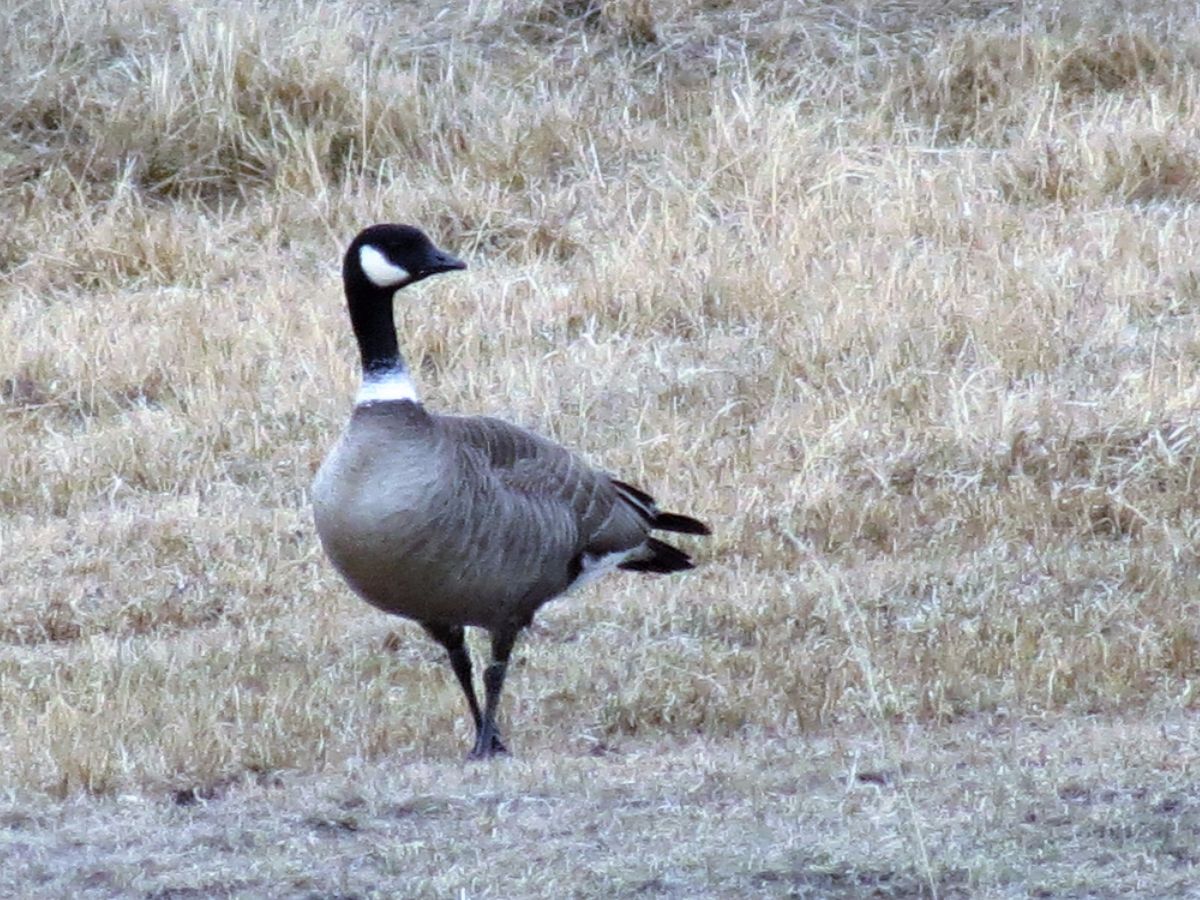
Aleutian Goose (Branta Hutchinsii Leucoparaiea). March 27, 2016.
Another sighting of interest occurred in the summer of 2009. I came across what looked like a juvenile RED-BREASTED MERGANSER on the 160 Street pond. This would have been amazingly unusual in the months of June and July. I could recall only one record previously of a RED-BREASTED MERGANSER here in the summer months and that was a bird on Railway Slough in the Irricana Sloughs. If I recall correctly that would have been in the 1990s.
Yet another unusual sighting amongst the non-Songbirds occurred during a Calgary area May Species Count. I believe it was early in the new millennium. It was drizzling rain all day and at the time I was on Sheriff King Street. I could see some California Gulls in a fallow field off to the west. A different bird from them was in the same field perhaps a hundred metres or so to the north. It had a black cap and was about Gull size and was watching the California Gulls. Through the rain I could see that the bird was a PARASITIC JAEGER! Well, one couldn’t ask for a better bird than that on a May Species Count.
Other sightings of interest include a ROSS’S GOOSE and a Greater White-fronted Goose on Sheriff King Slough and an immature Snow Goose in with Canada Geese foraging in a stubble field on Sheriff King Street. In the 1990s, an adult GREAT EGRET was found in a wetland at the junction of Highway 2A and 194 Avenue in south Calgary. After a couple of days, the bird left the wetland and flew westward into the Hills and was seen flying parallel to 226 Avenue at the Highway 773 junction.
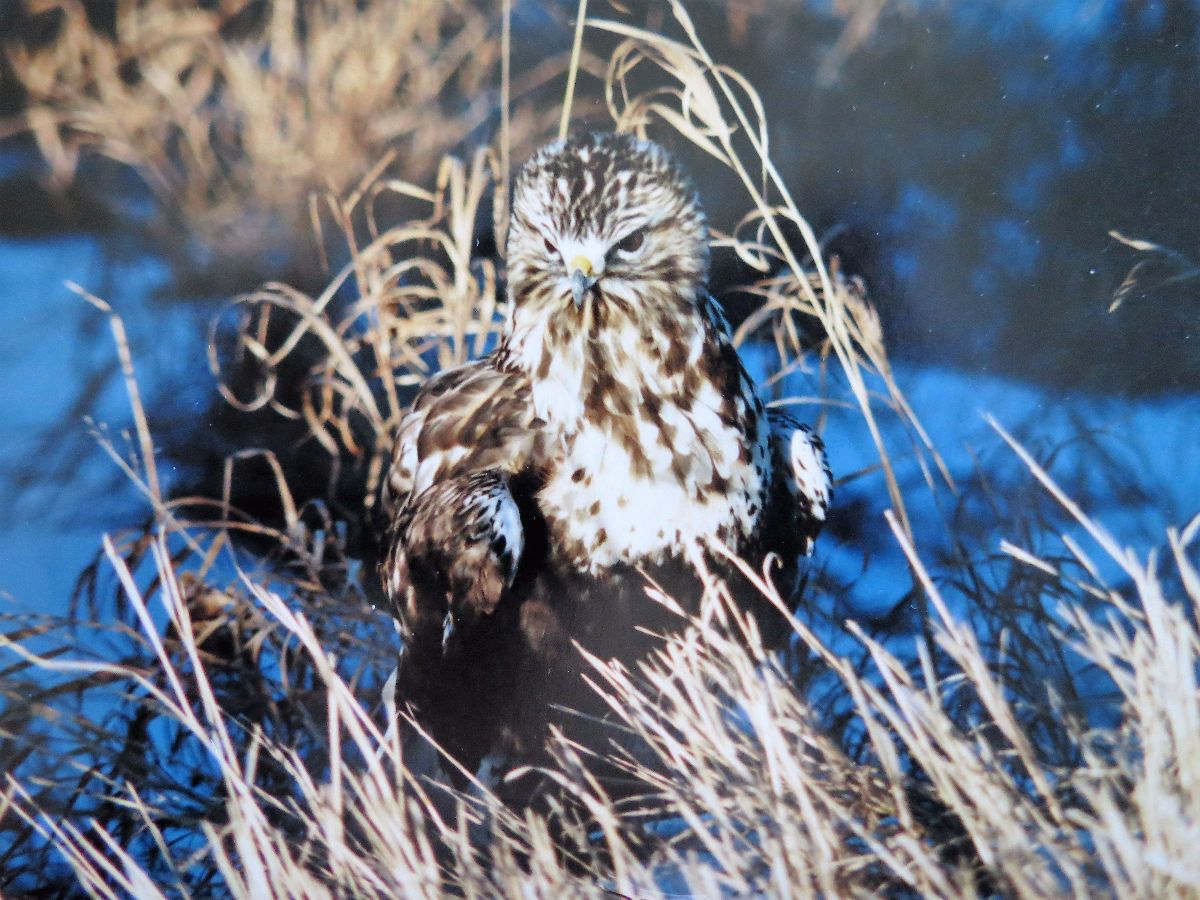
In the Fall of 2015, we were returning home from a trip through the Hills along Highway 773. I was almost completely stunned to see an adult Ferruginous Hawk perched on a fencepost at the 4-Way Stop. This was the first time I had seen that species south of Calgary. This leads us to another class of birds to deal with; the Raptors. Swainson’s Hawks and Red-tailed Hawks are the 2 common Buteos of the area. You should see Ospreys at Sheriff King Slough and both Sharp-shinned and Cooper’s Hawks can often be seen in migration soaring over the hilltops. Northern Harriers are not common, but are there. Northern Goshawk is resident in the west end of the area, and, occasionally, some birds venture further east in to the open hills in search of prey. Rough-legged Hawks can be found in the Hills from Fall to Spring, but, numbers vary from year to year. Golden Eagles are occasionally seen in the block. Peregrine Falcons have been seen passing through and one can have a chance to find a Gyrfalcon somewhere in the area. Areas where Gyrs have been seen most often are along the open fields off Sheriff King Street and along the valley along 226 Avenue and along the east-west section of Highway 773.
On Red-tailed Hawks, the mature Balsam Poplars lining 210 Avenue west of Sheriff King Street were the first location in southern Alberta where dark morph Red-tailed Hawks were confirmed as breeding. That was in 2007. Since that time a mixed pair of Red-tails, one bird dark and the other light, were seen in 2 successive years, 2013 and 2014, over heavily-forested terrain off 192 Street. In the Summer of 2013, a dark morph Red-tail, probably the bird from the mentioned pair was seen over the 160 Street pond. In the Summer of 2016, an intergrade light morph-dark morph bird was seen perched in a remote Aspen on a road through the Cross Conservancy. Considering the fact that there have been other such mixed pairings breeding within the Calgary area within the past few years, it is now possible to see an assortment of differently-plumaged Red-tails in the Hills even in breeding season. In migration, the Hills is an excellent site to see migrating Red-tails in many different plumages. Rarely, a dark morph bird may overwinter in the area.
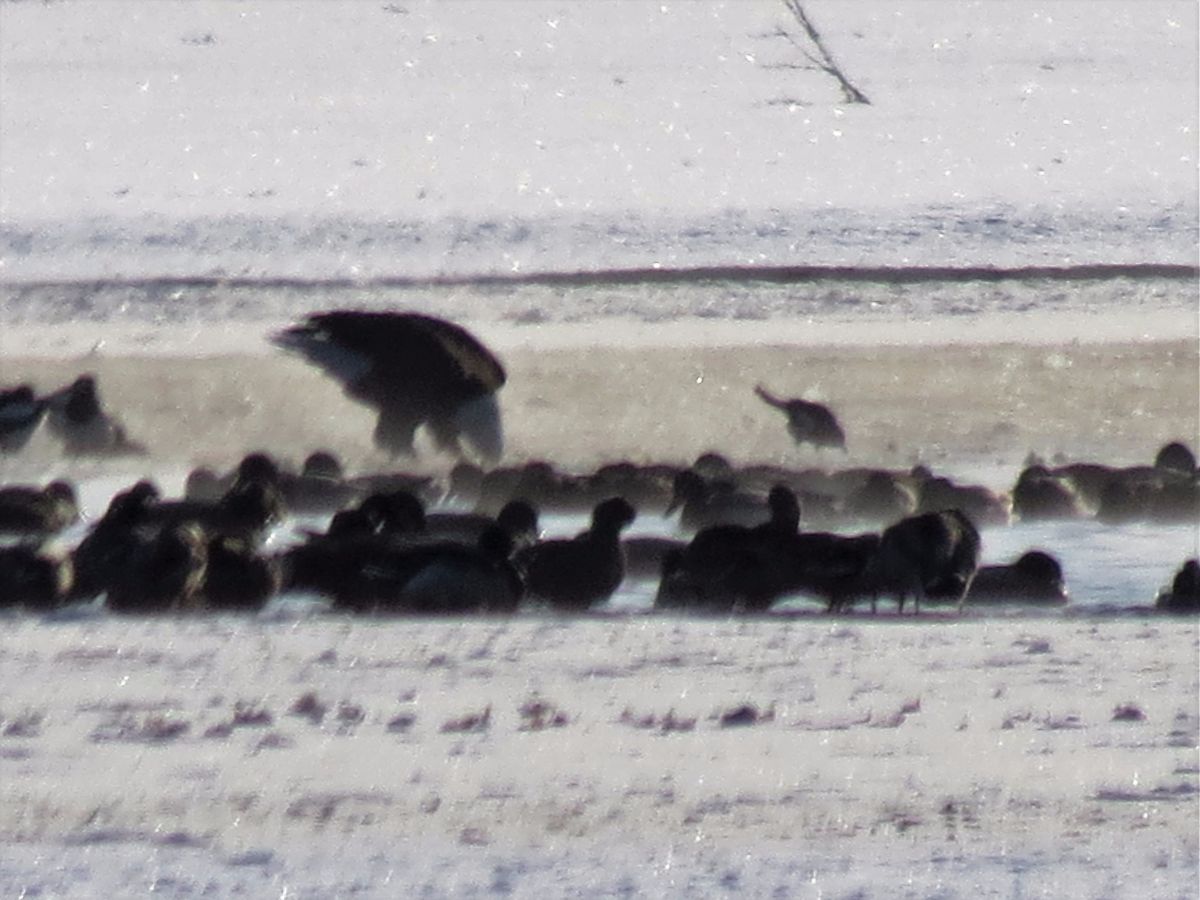
Bald Eagles are not resident in the Hills, but, they can be seen in the Spring hunting Richardson’s Ground Squirrels, and, in late Fall, they can be seen hunting waterfowl at fast freezing waterbodies, usually Sheriff King Slough. But this activity is not confined to Bald Eagles. One year I watched a pair of immature Northern Harriers set up shop at Sheriff King with only a few openings left in the ice holding lingering waterfowl. Waterfowl remains were many on the surrounding ice.
One family of birds that could probably do with more study in the Hills is the Owl family. Great Horneds are resident, and, Northern Hawk Owls are sometimes spotted in the semi-open areas of the west end.

One final point I think that would interest birders is the fact that some of the waterbodies in the area are favoured amongst migrating Trumpeter Swans. One very reliable site to watch these snow white birds are the ponds at Springwell Farms. The ponds have also held Snow Geese.
_____________________________________________
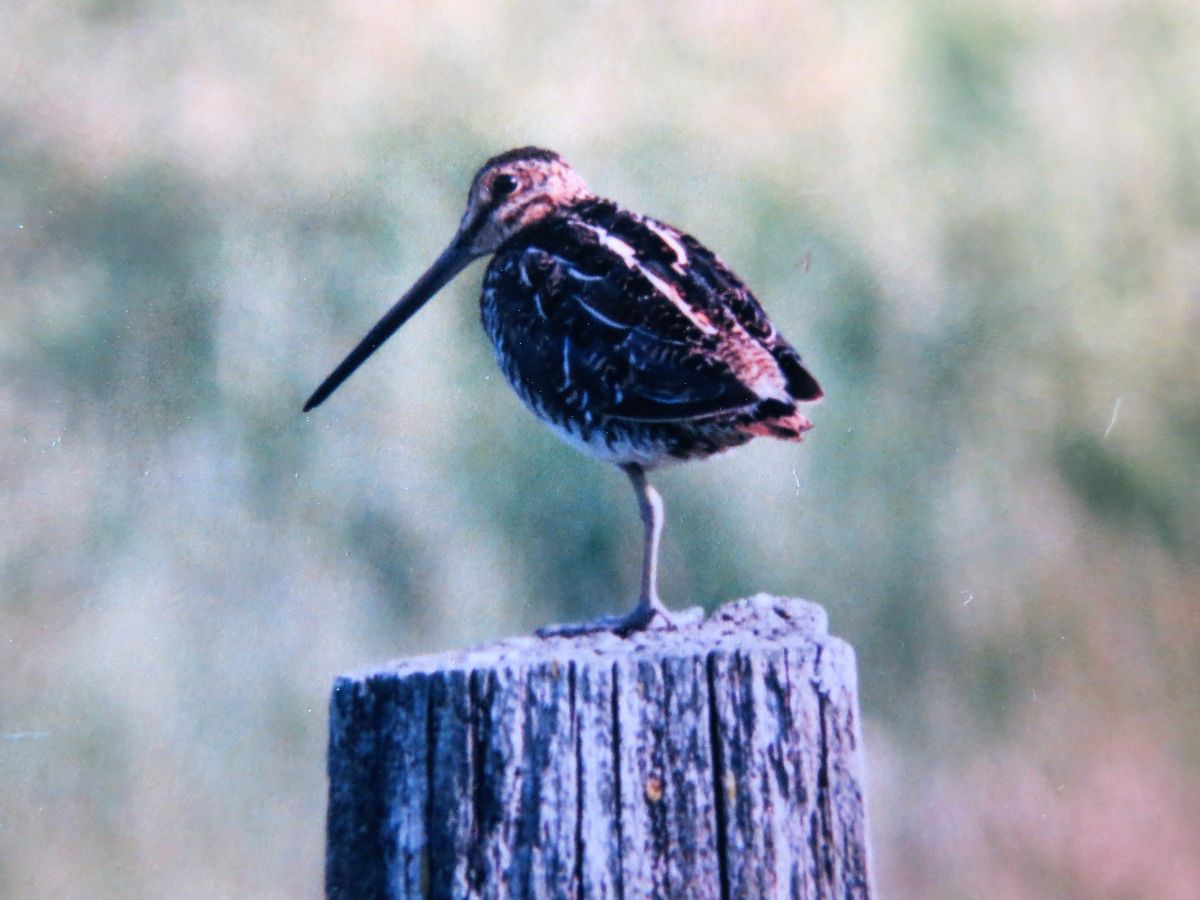
Wilson’s Snipe. Many of these were brought out in the open by winter weather on October 8. April 20, 2015.
Fall Migration, 2016–
The most important bird that has come to light since the most recent Terry’s Travels was the discovery of a Hummingbird that was coming to a home southwest of Longview, Alberta. I noticed the photograph of the bird on the Alberta Birds Facebook page, and, investigating further, the bird most resembled an immature male Costa’s Hummingbird, which would be the Province’s only 3rd. record ever. The bird had been coming to this home for 2-3 weeks, but now has not been since Tuesday, October 4.
Four hundred Loons must have been quite a sight at Barrier Lake on Highway 40 in Kananaskis Country on Thursday, October 6. This came following our first blast of somewhat wintry weather. Three of the birds were Pacific Loon. To top it off, there were also 9 Surf Scoters there, and, an additional 30 at Lake Minnewanka in Banff National Park. A lone Pacific Loon has been at Glenmore Reservoir in Calgary since October 6 and both Surf and White-winged Scoters have been there almost daily. A female or immature BLACK SCOTER there on October 6 was a major find, but, unfortunately appears as though it was seen by only the person who found it.
Northern Gulls are finally starting to appear in our area. A Nature Calgary Field Trip found a 1st. year KUMLIEN’S ICELAND GULL; a 1st. year Herring Gull-Glaucous GULL hybrid, and, 5 1st. year Thayer’s Gulls at the Peigan Trail Gull Ponds below the City of Calgary Landfill on October 8. Another KUMLIEN’S GULL, this time an adult, was seen on the Bow River adjacent to the Inglewood Golf Course on Thanksgiving Day. An adult Mew Gull has attracted many observers to the Irrigation Canal opposite the Inglewood Golf Course for the past few days while 1 or 2 others were reported on Thanksgiving Day, one on the river by the Inglewood Golf Course, and, the other at Elliston Park in southeast Calgary.
According to reports, a large white Falcon in the Burnsmead area of Fish Creek PP on Sunday, October 2 may have been a white morph GYRFALCON which I know of only 5 previous reports in the Calgary area since 1987.
Rusty Blackbirds are starting to show up in our area. A nice flock of 25 was discovered in an Irrigation Canal on Range Road 262 south of Township Road 270 southeast of Irricana on October 8.
A Harris’s Sparrow is being a big draw in an Edmonton park, while one was found in Bowmont Park in northwest Calgary on Thanksgiving Day.
The recent blast of Winter has had Wilson’s Snipe and Western Meadowlarks out in the open. A Nature Calgary Field Trip found a total of 32 Snipe and 8 Meadowlarks east of Calgary on October 8, while others also filed reports finding both Snipe and Meadowlarks.
Common Redpolls are new winter visitors here, while late-migrating shorebirds included a Baird’s Sandpiper and a Lesser Yellowlegs at McElroy Slough on Inverlake Road just northeast of Chestermere Lake on October 8, and, a Solitary Sandpiper, also at McElroy Slough, on October 5.
Until next time………………
Tony LePrieur photographed these American Pikas recently at Rock Glacier trail near the Highwood Pass in Kananaskis Country.






See more of Tony’s Photos on his Flickr page here.
If you have good photos of Calgary-area mammals, send them to our email address and we may post them on an upcoming Friday.